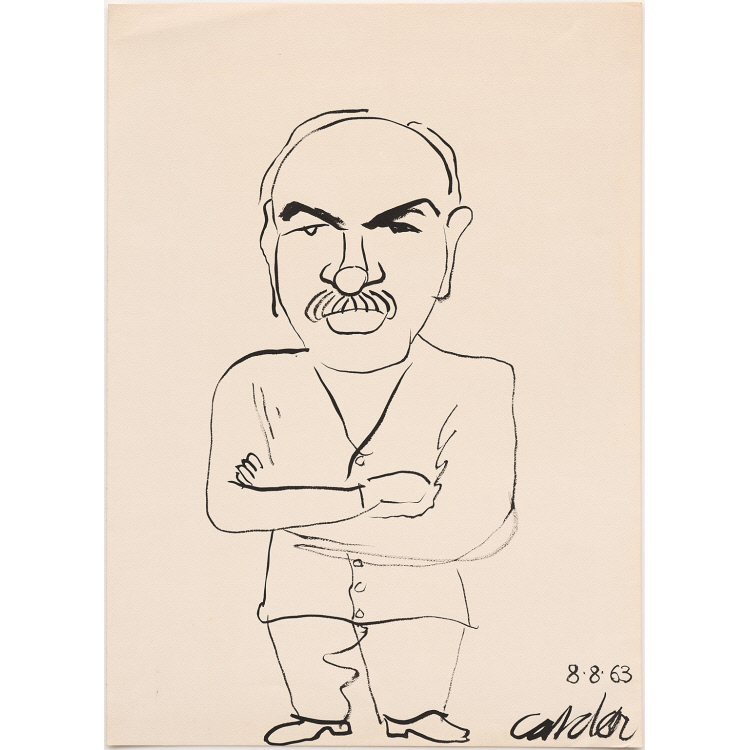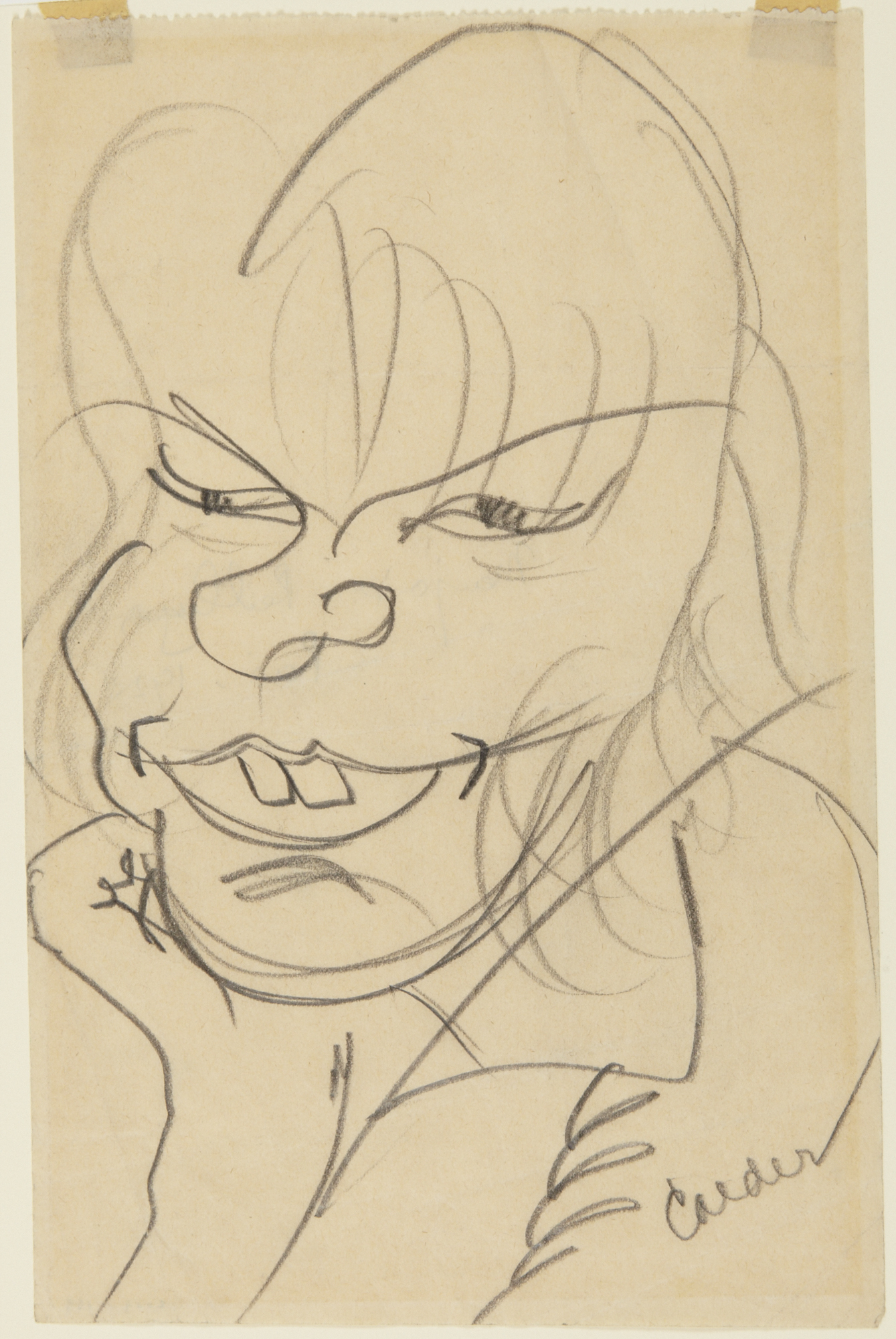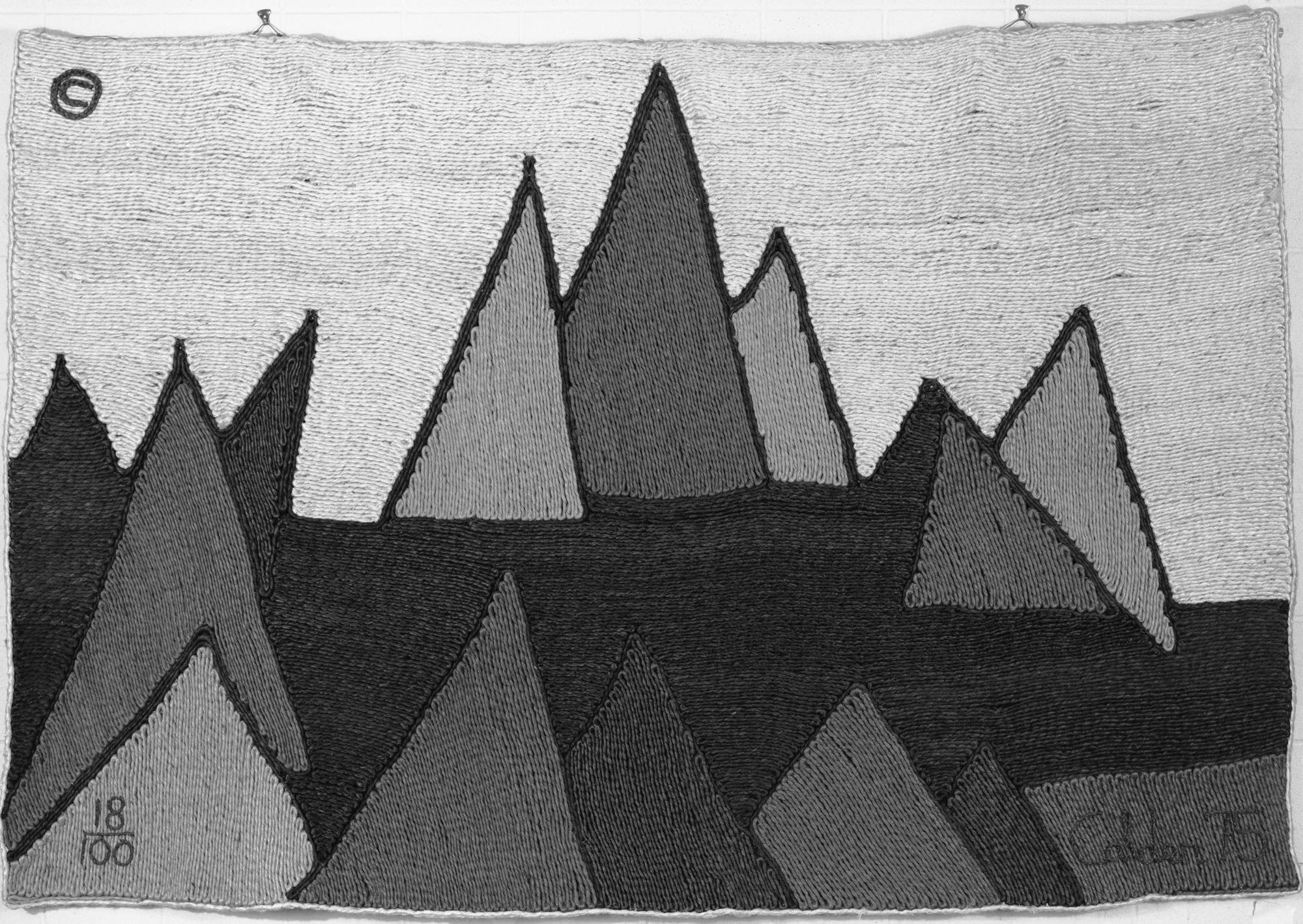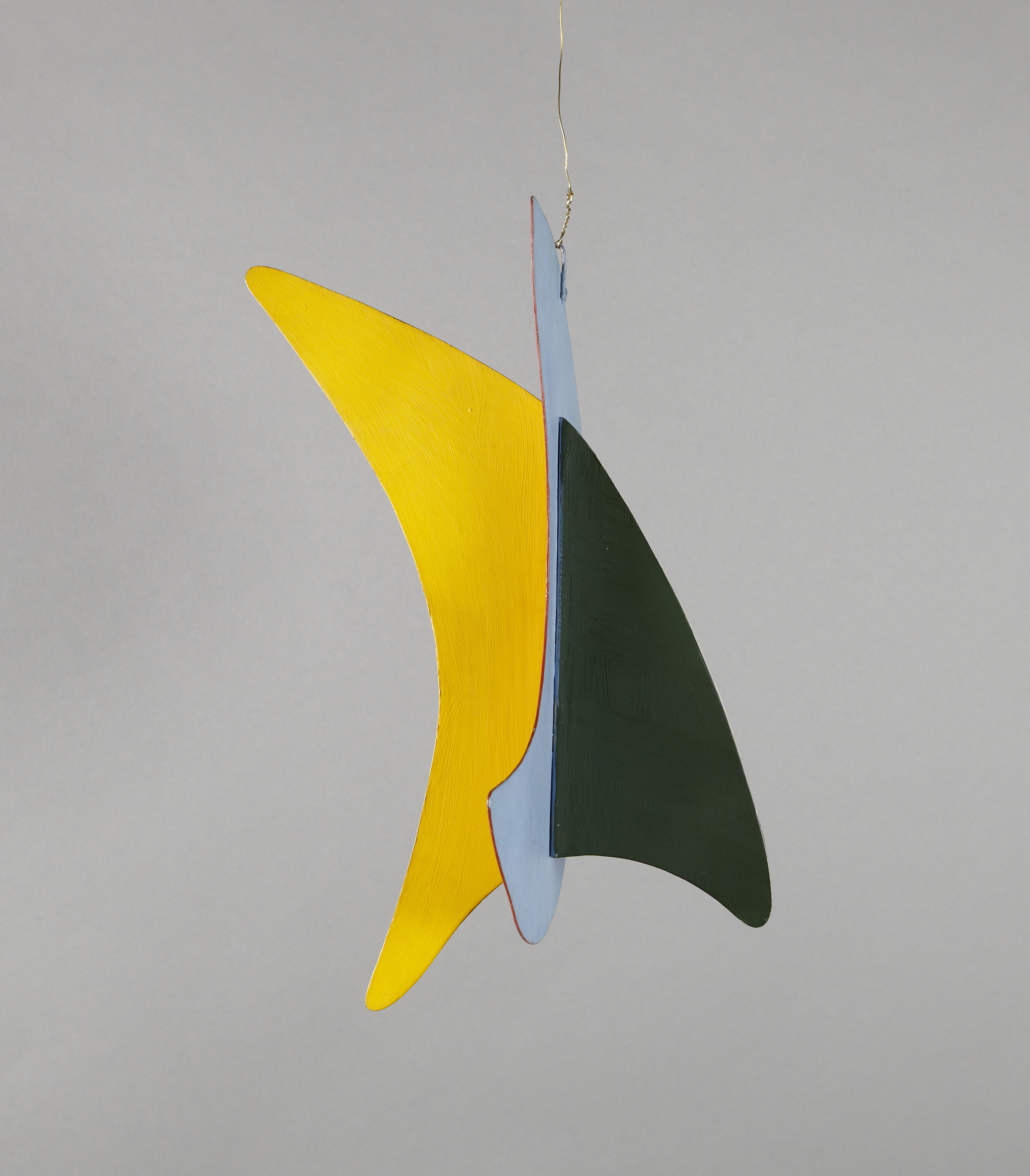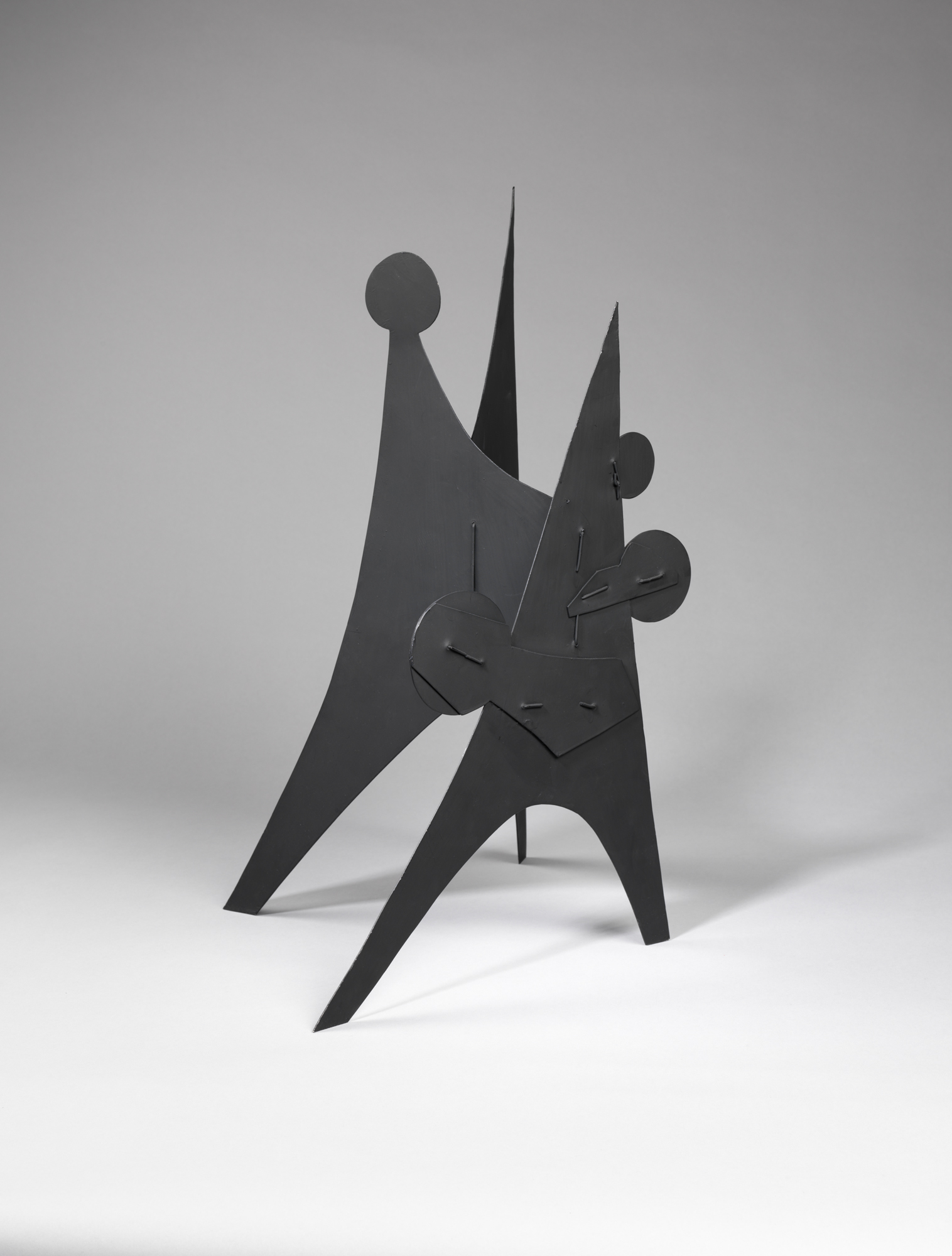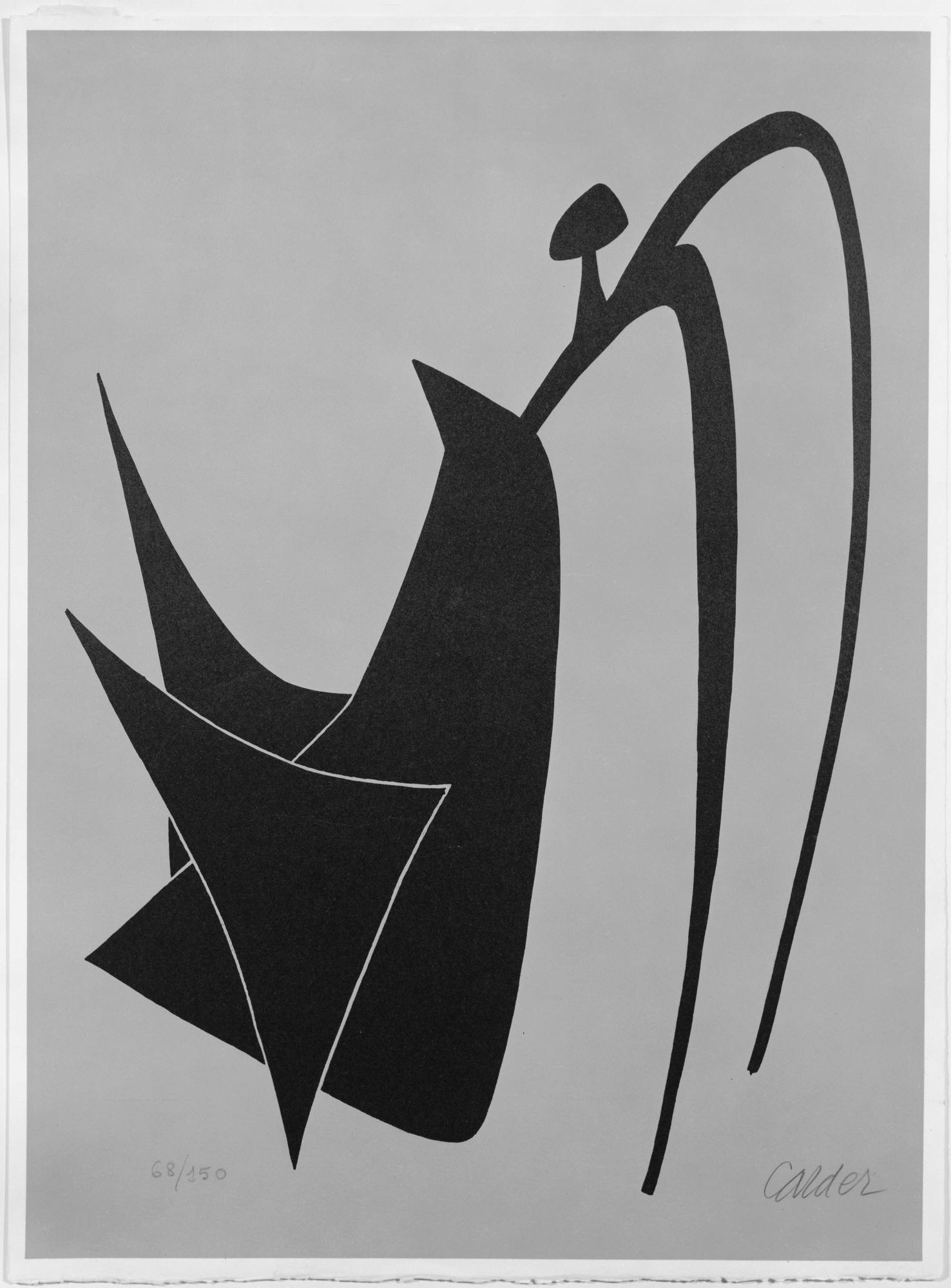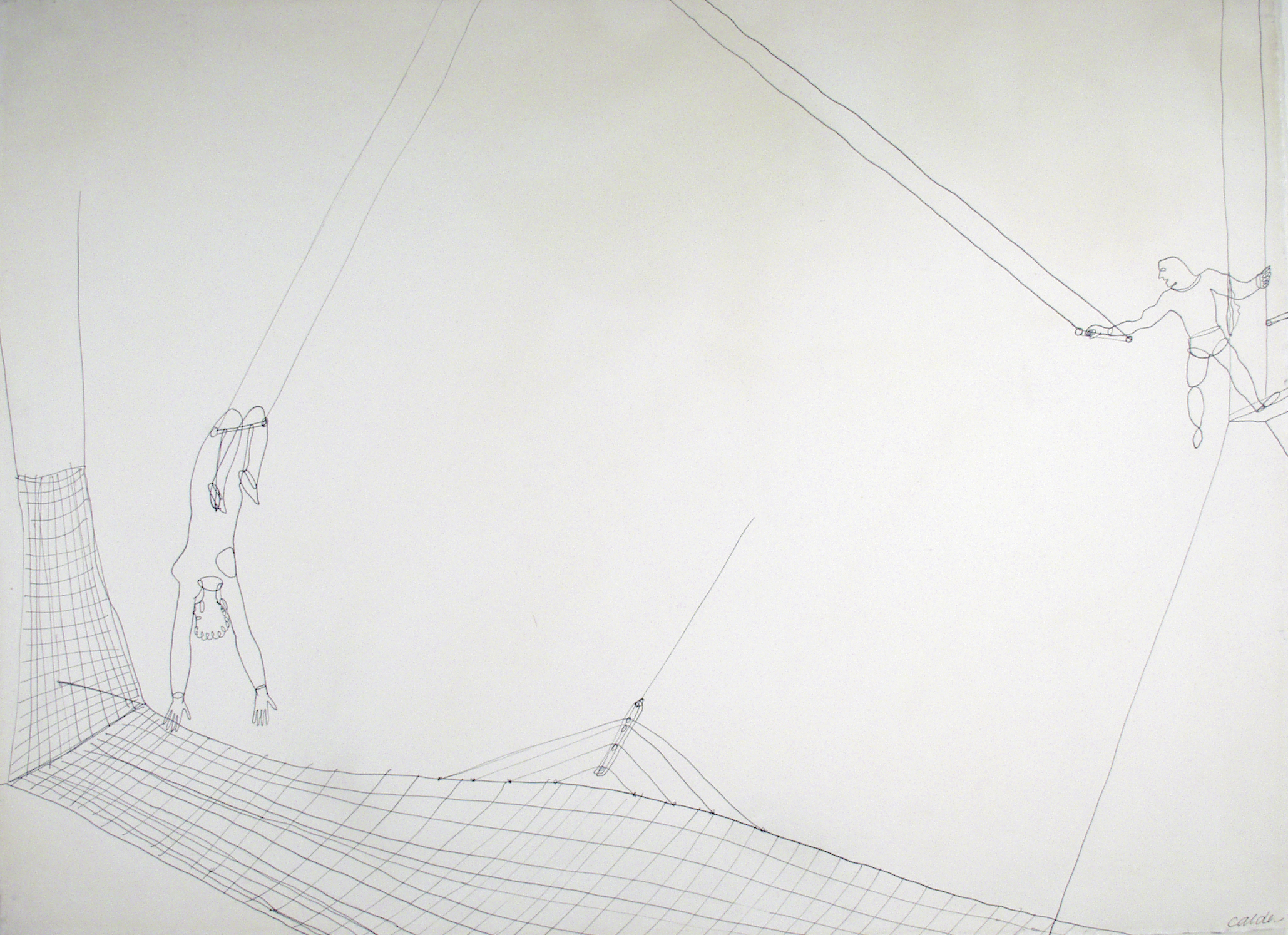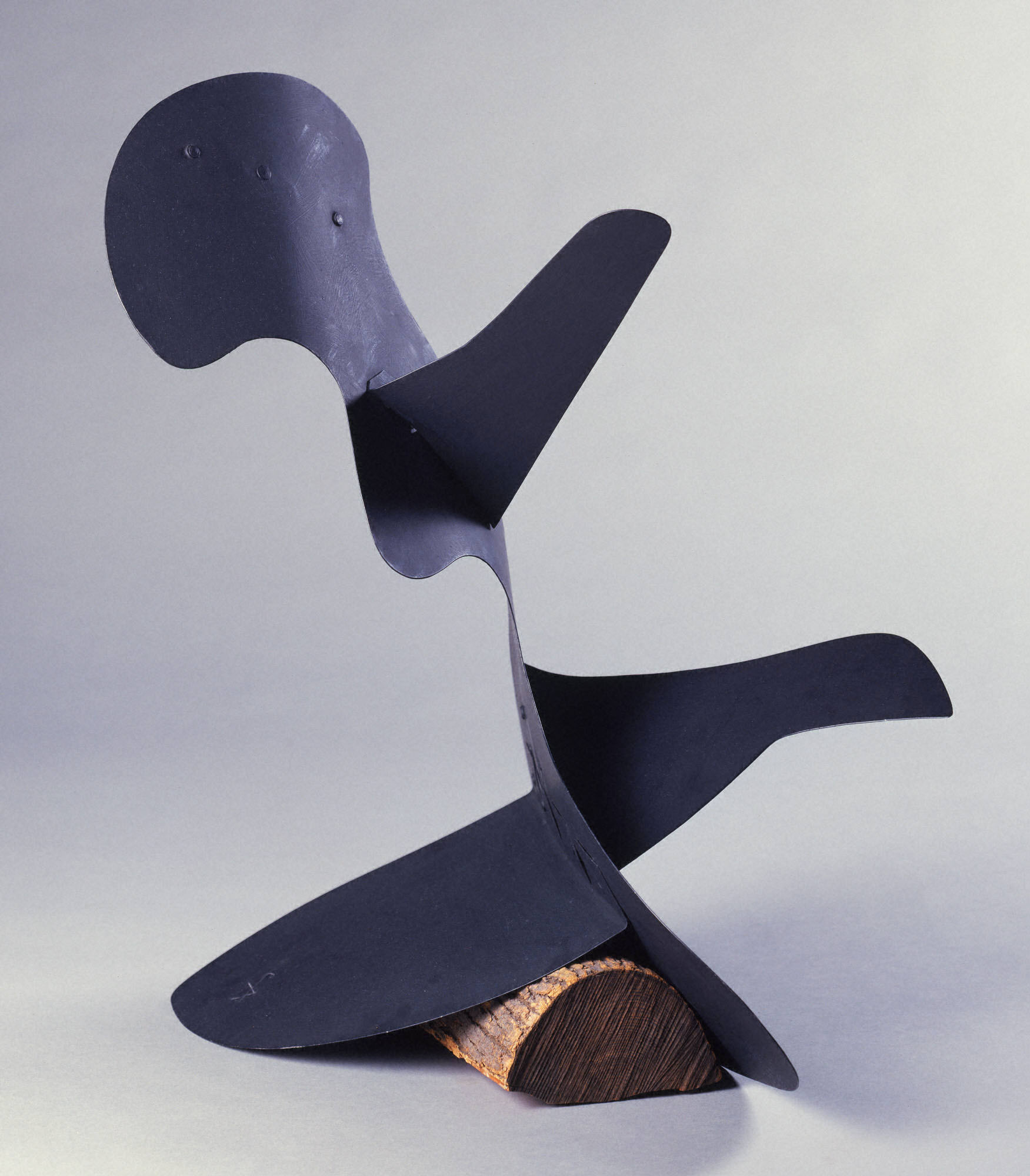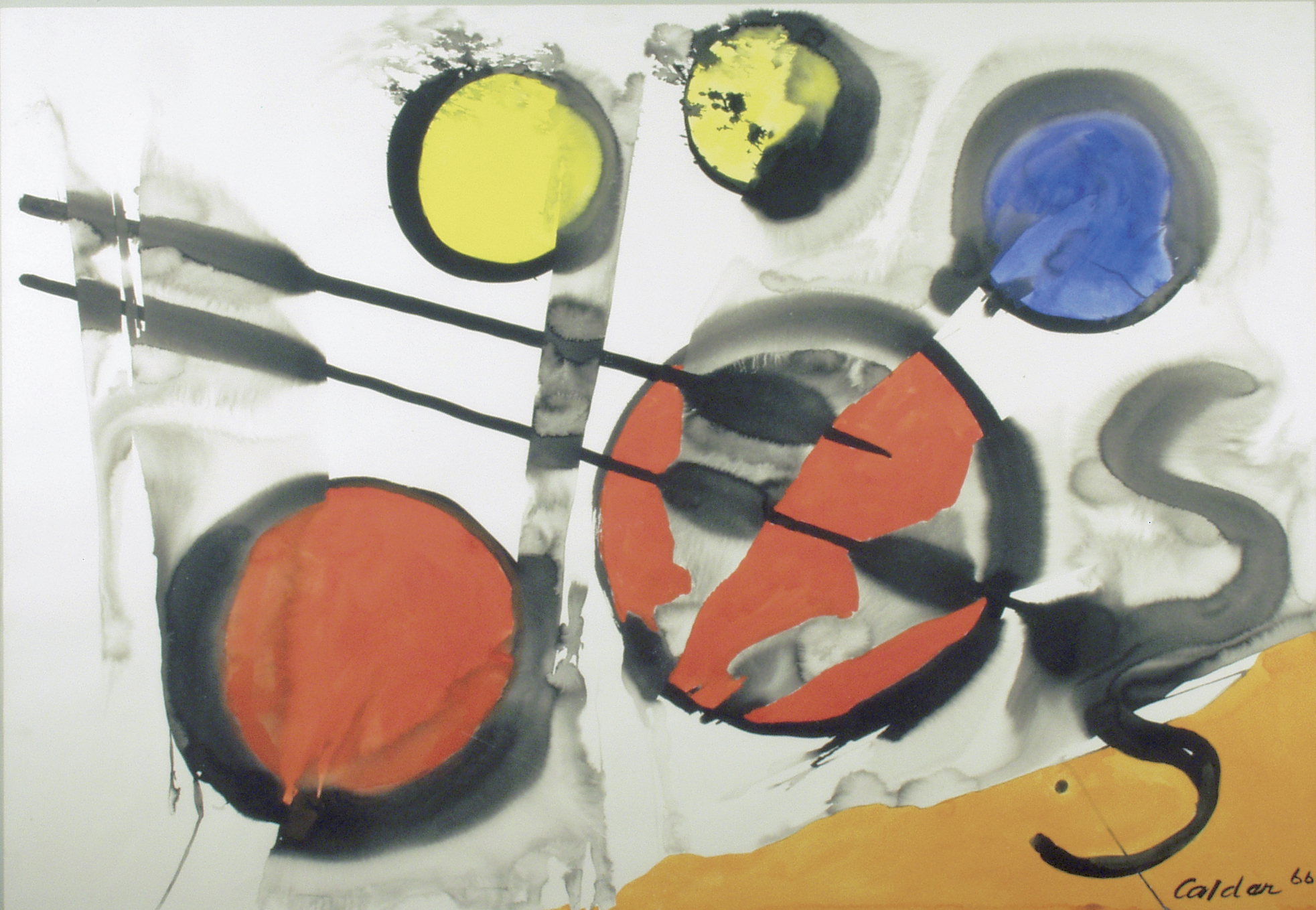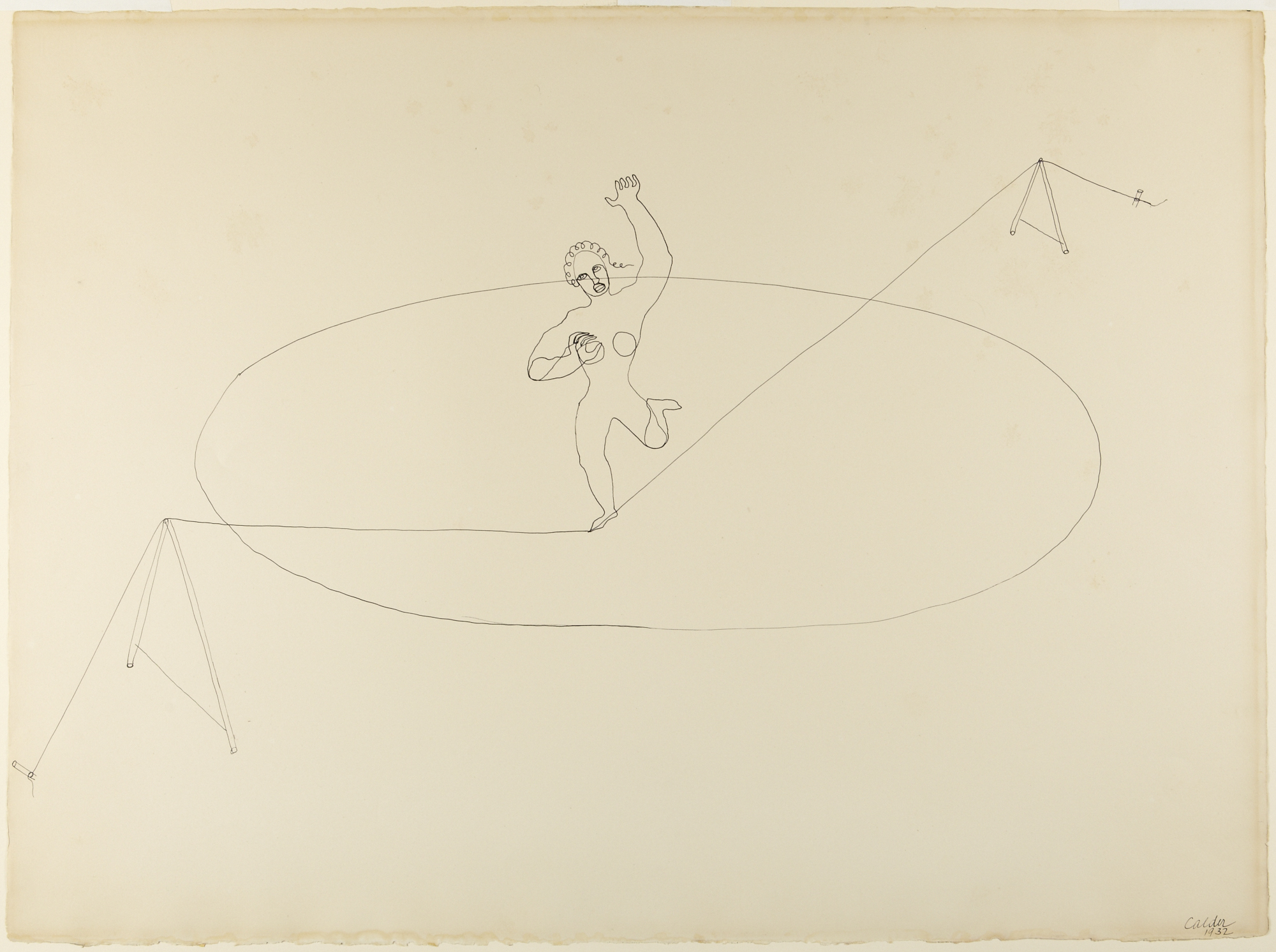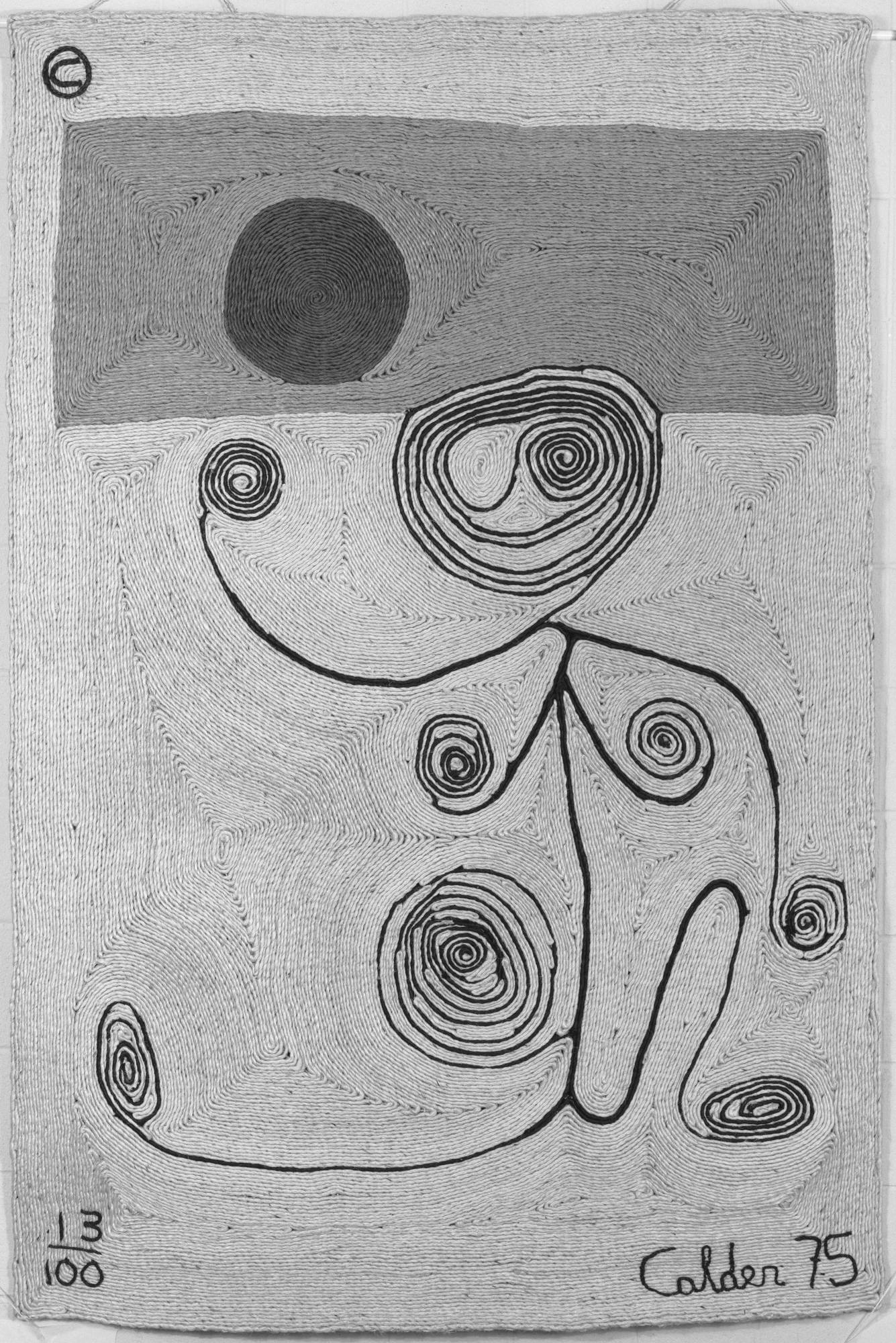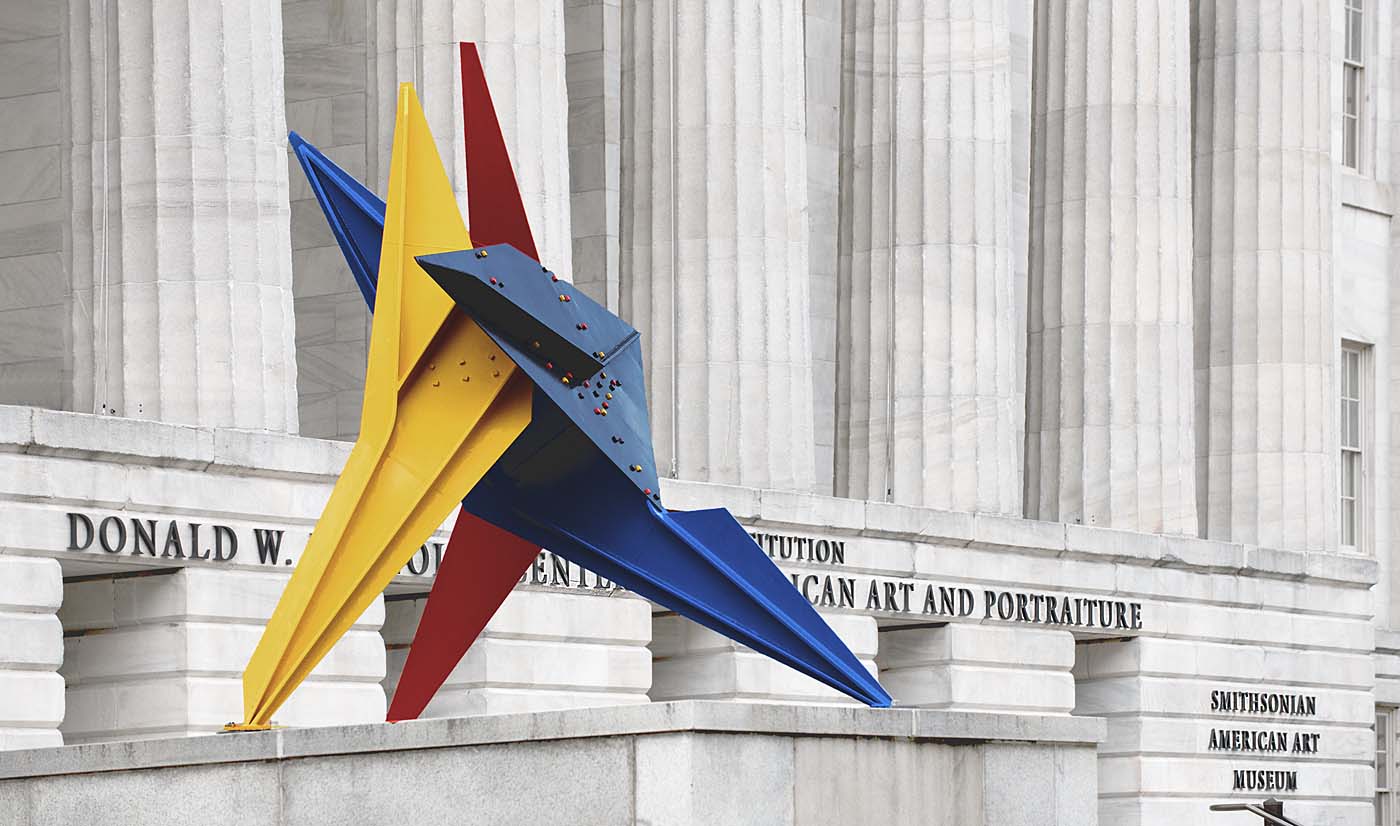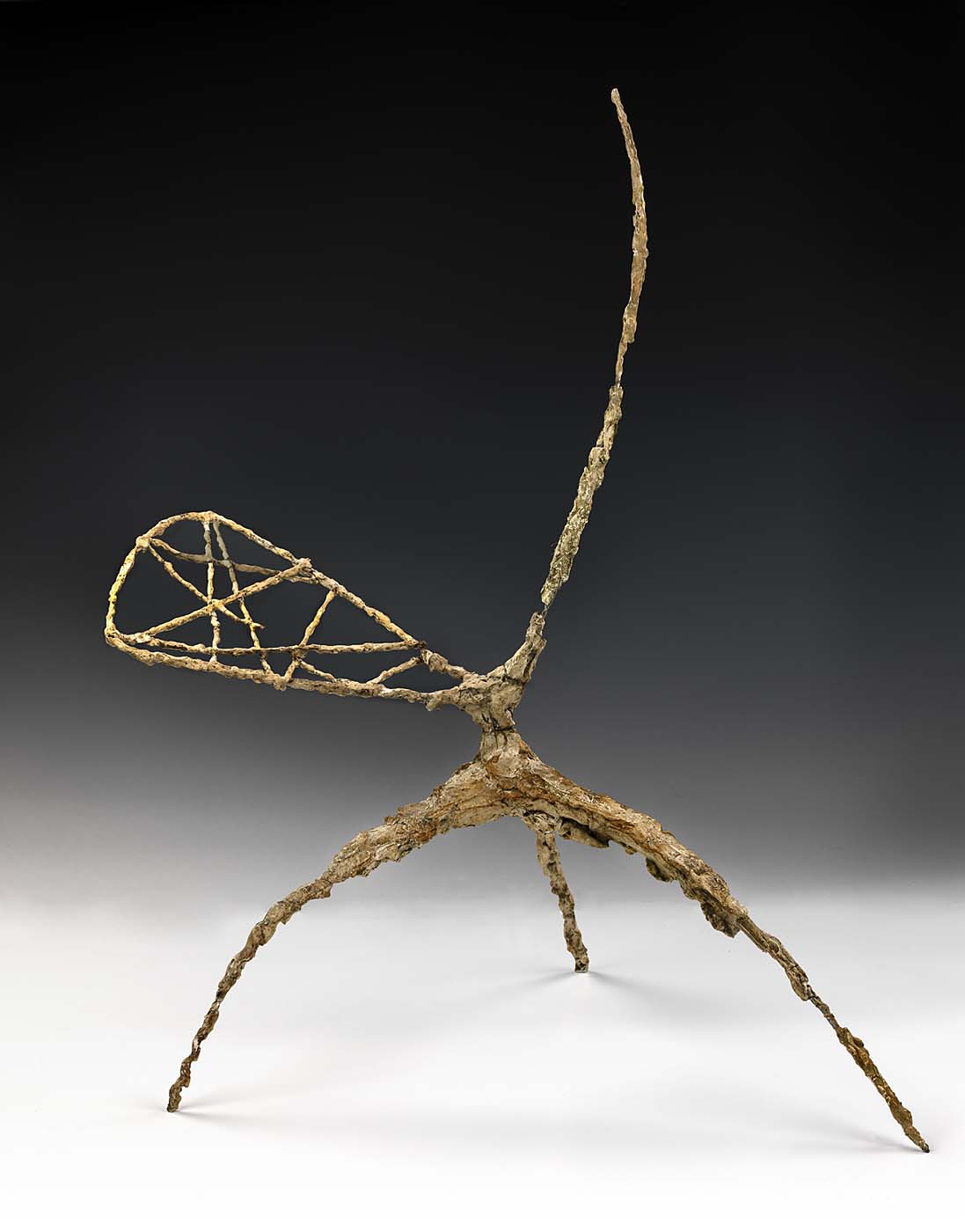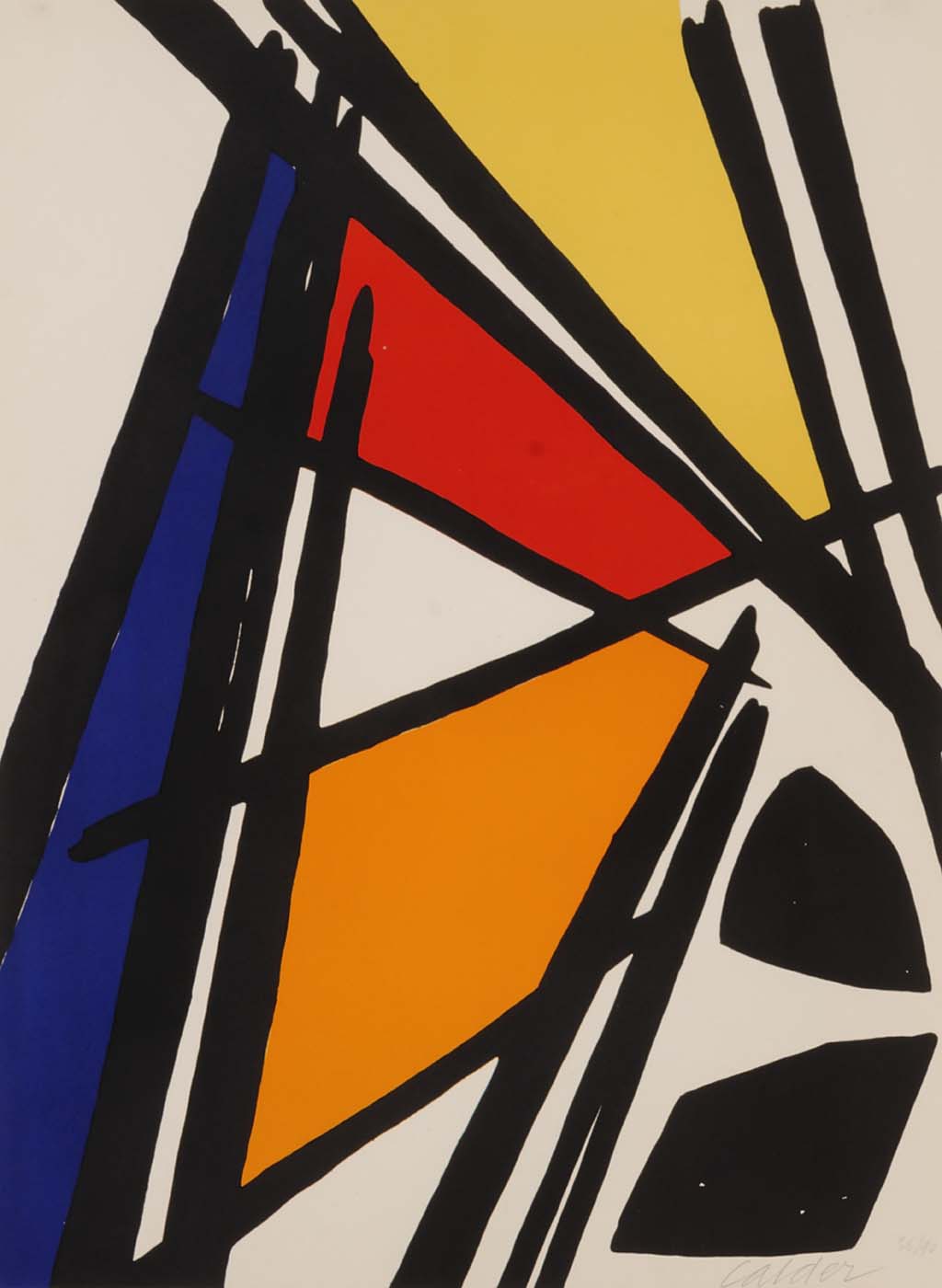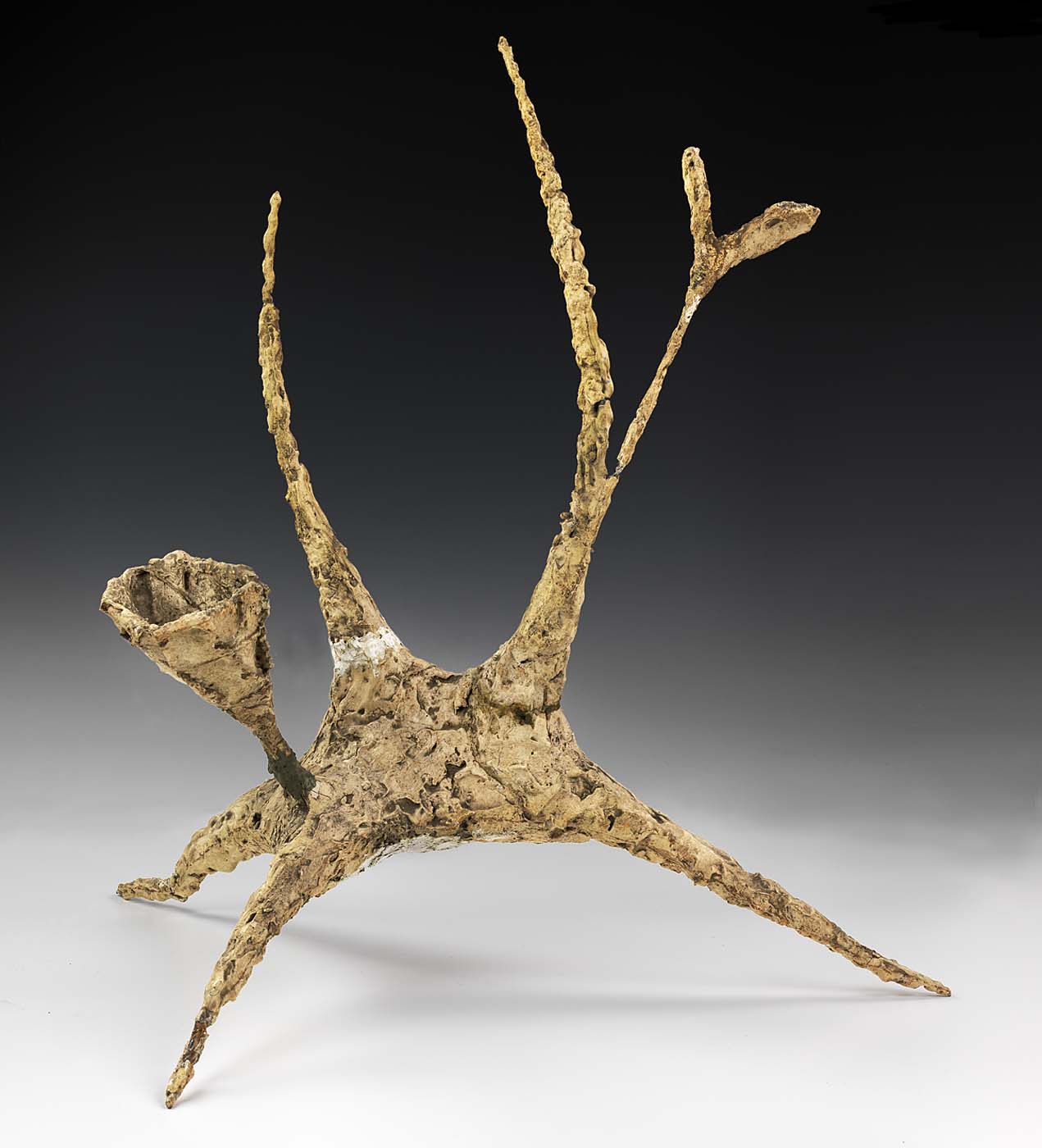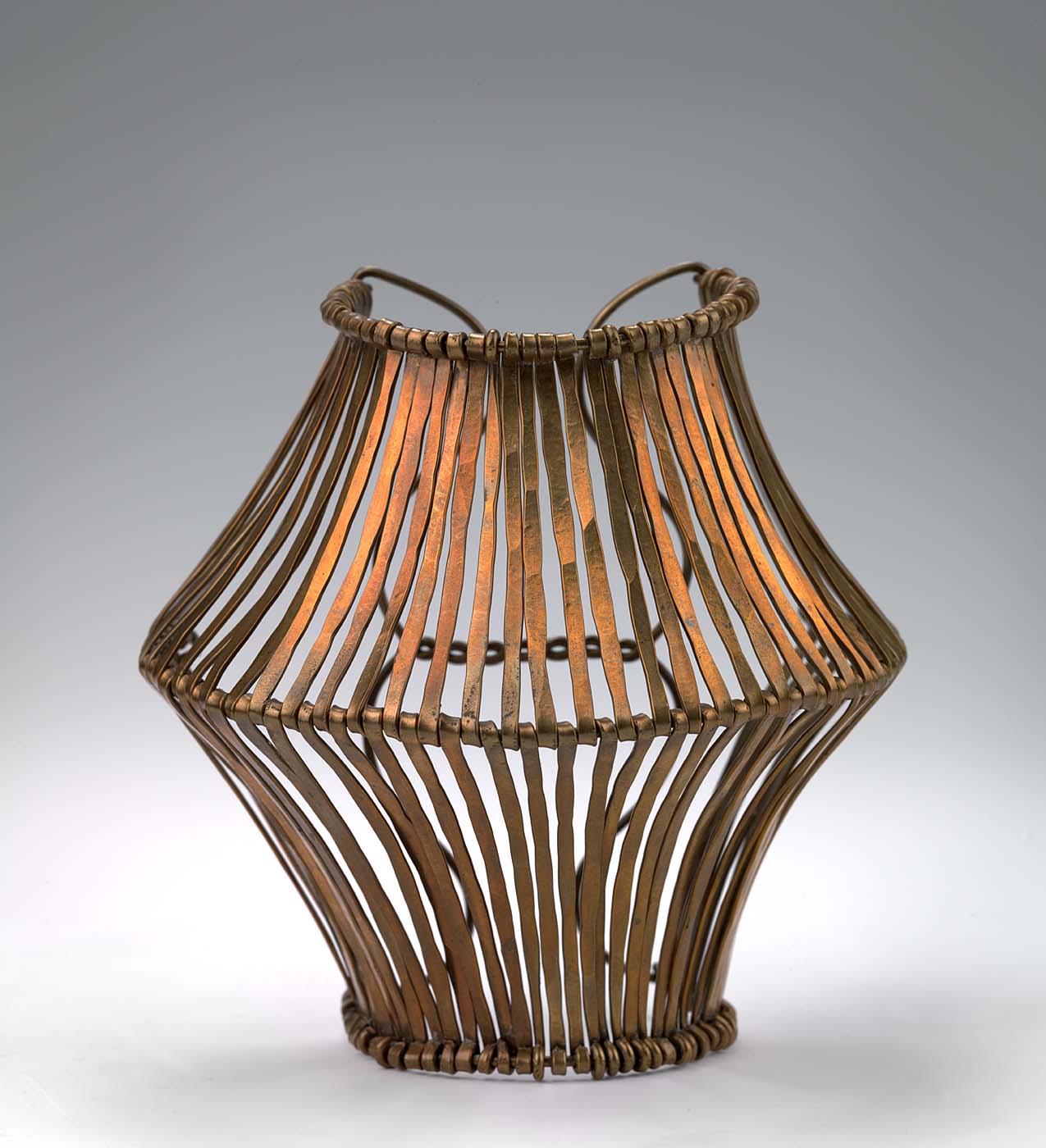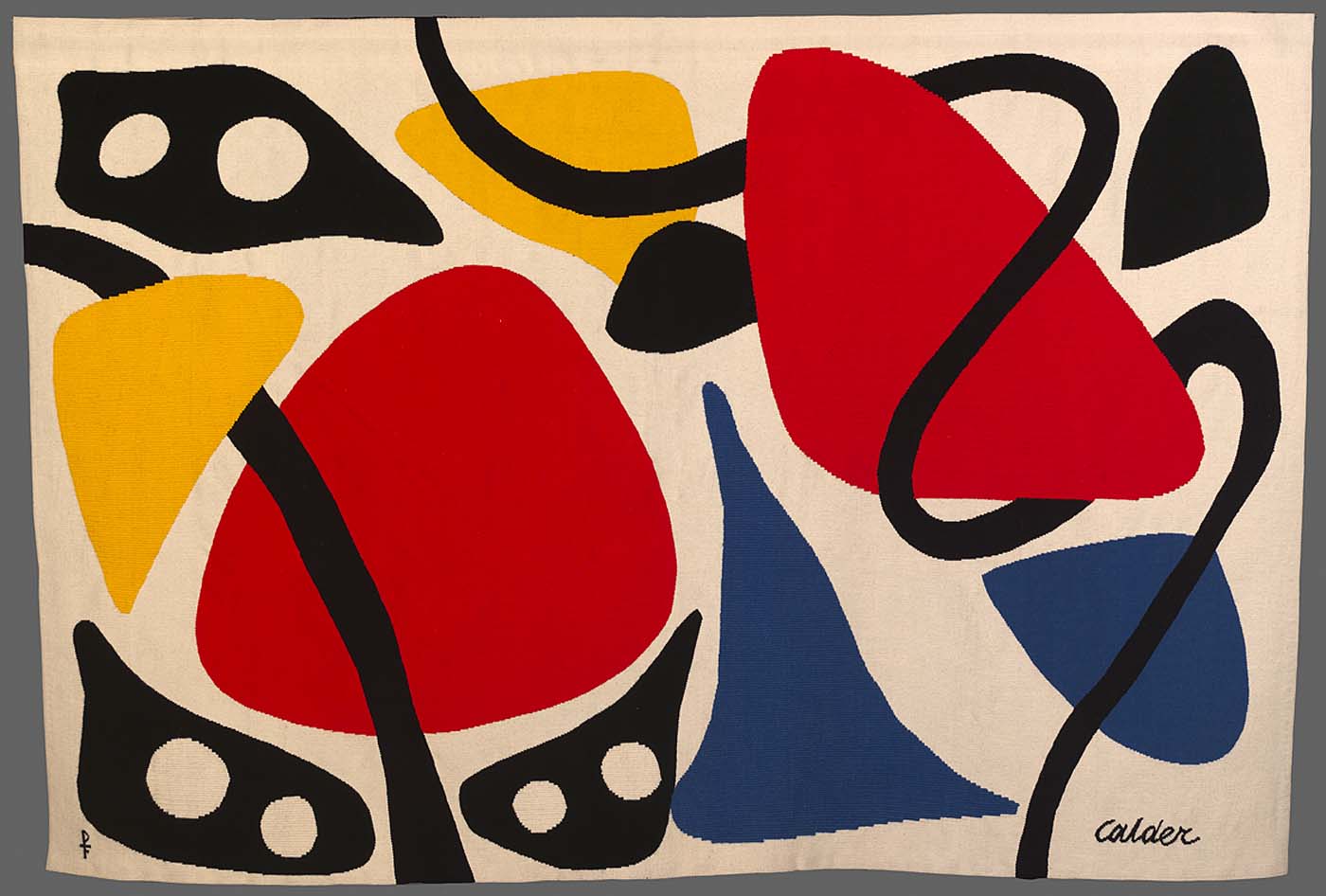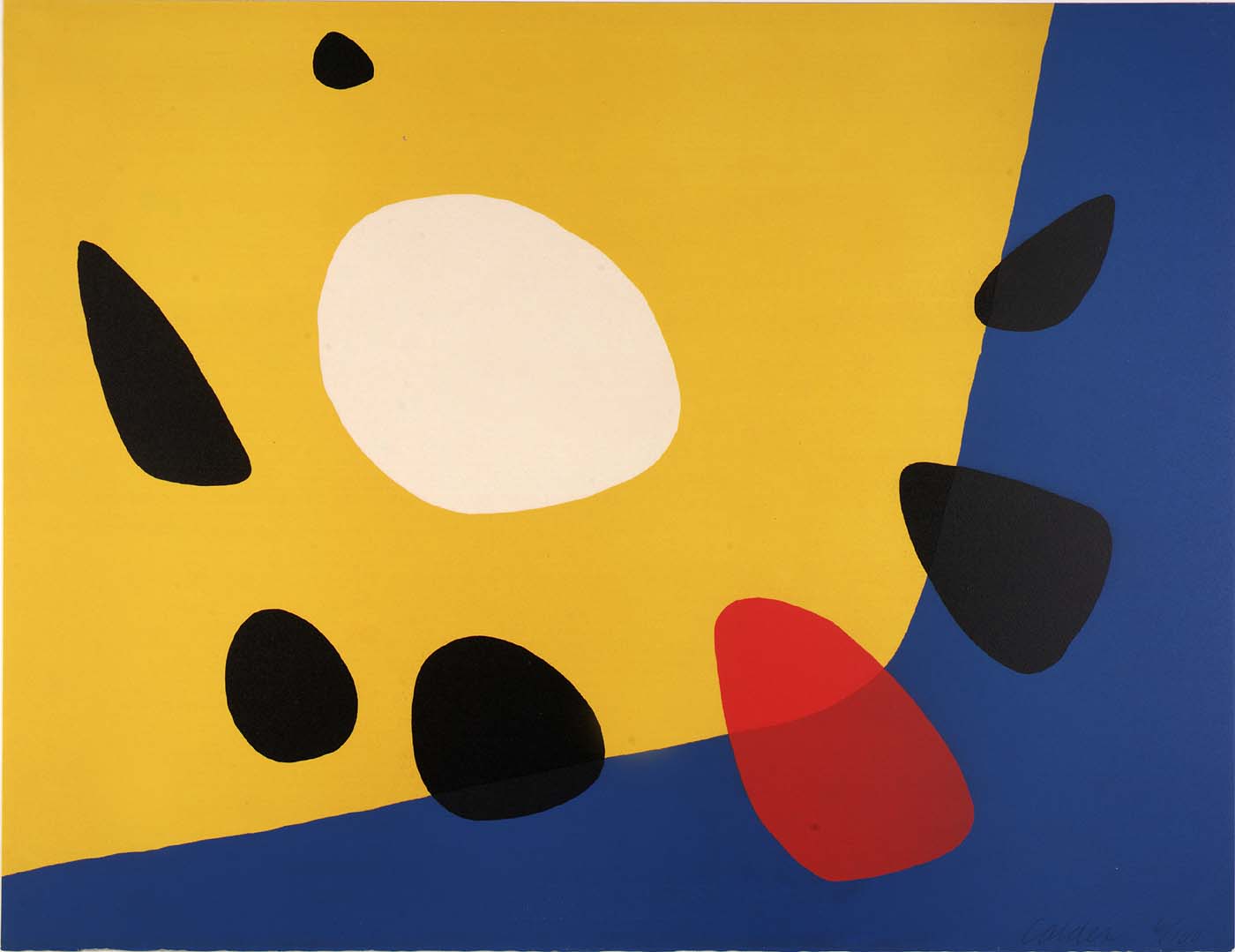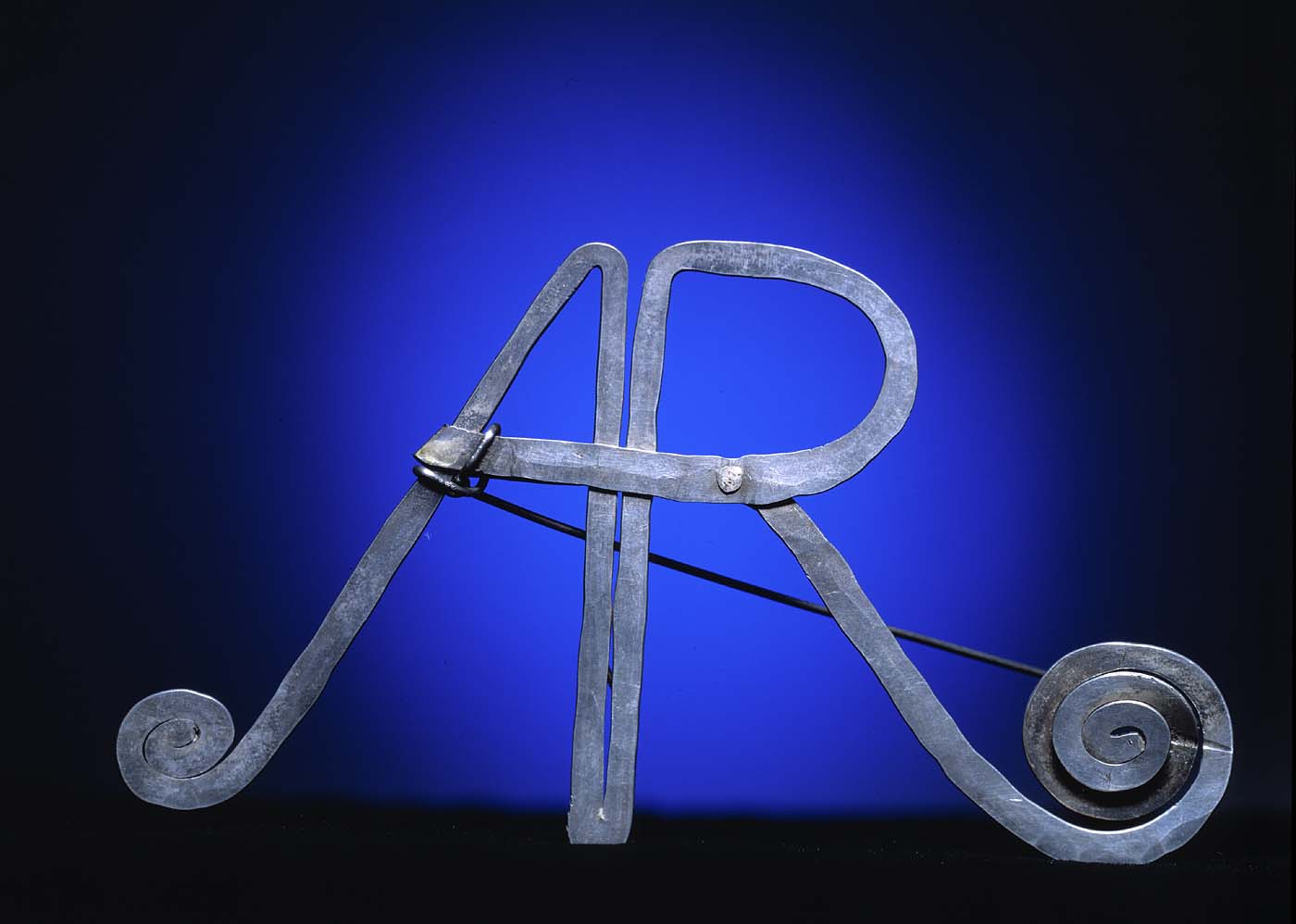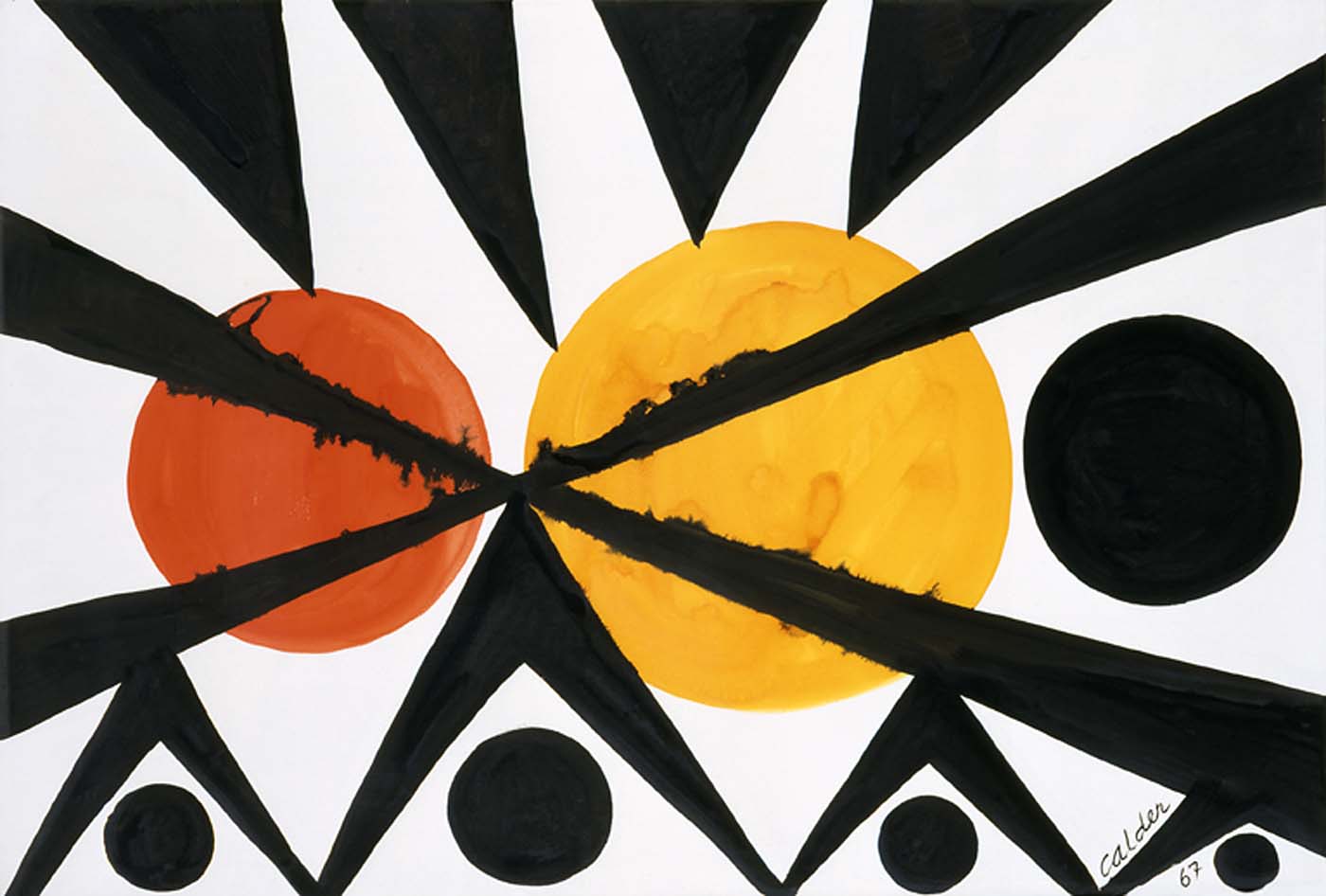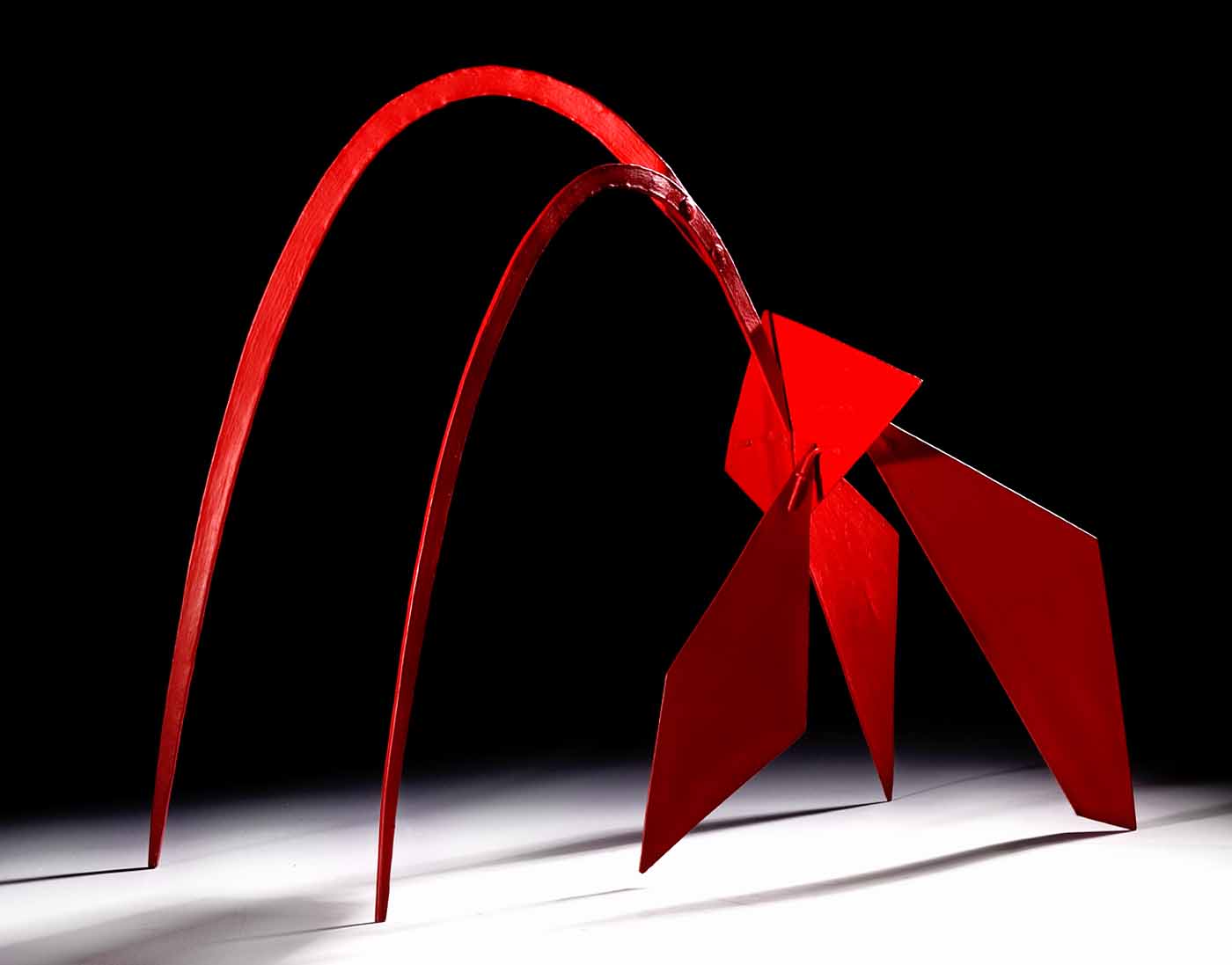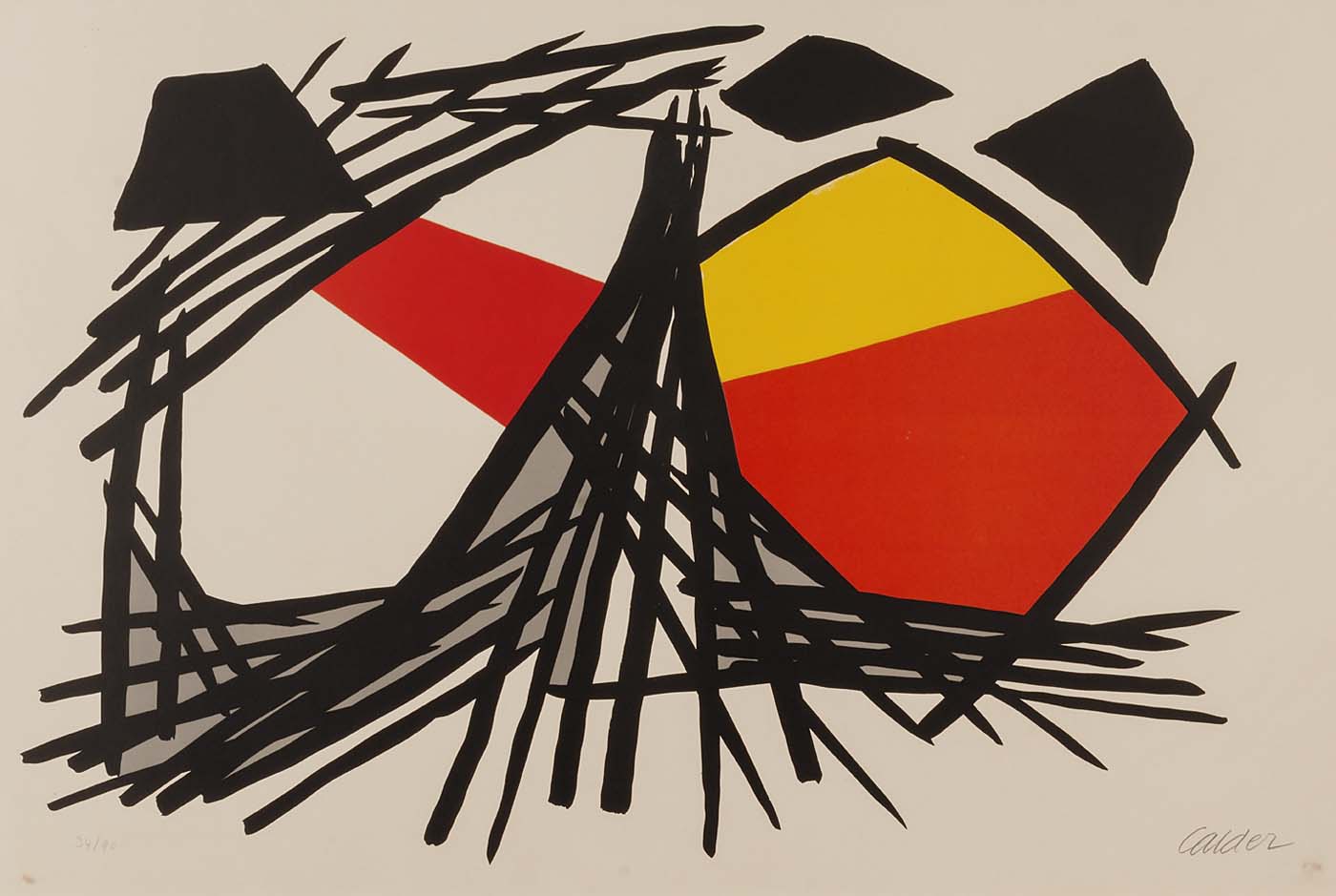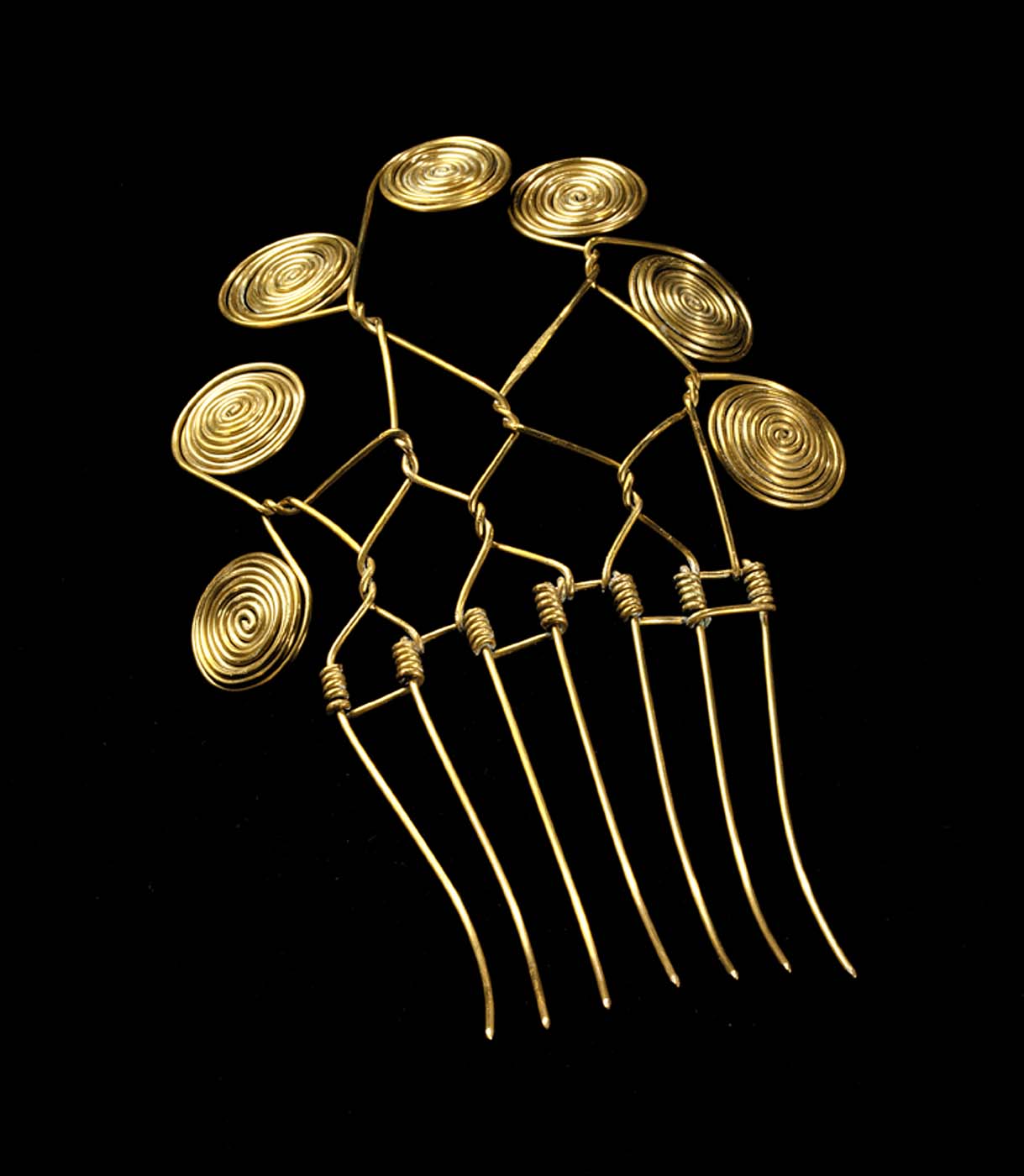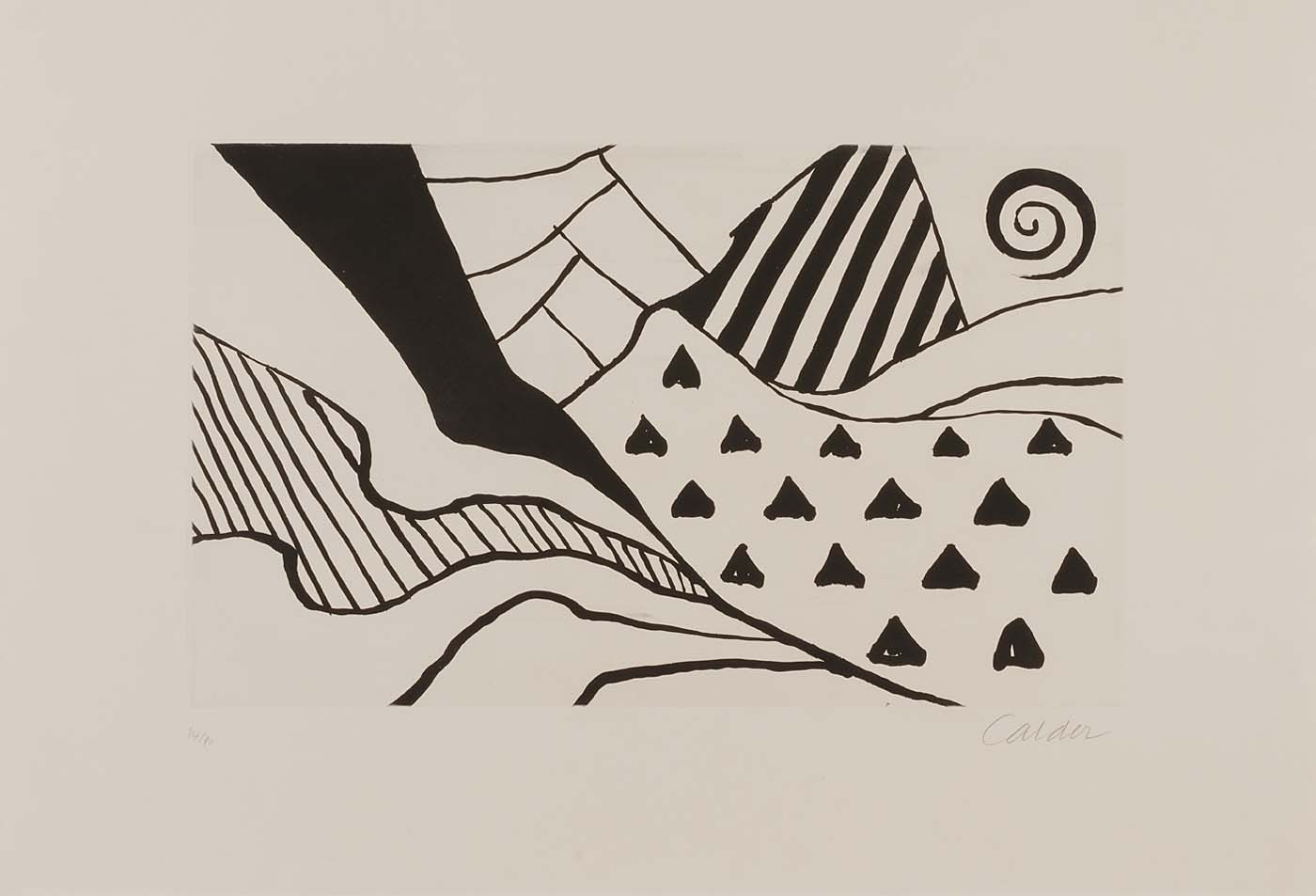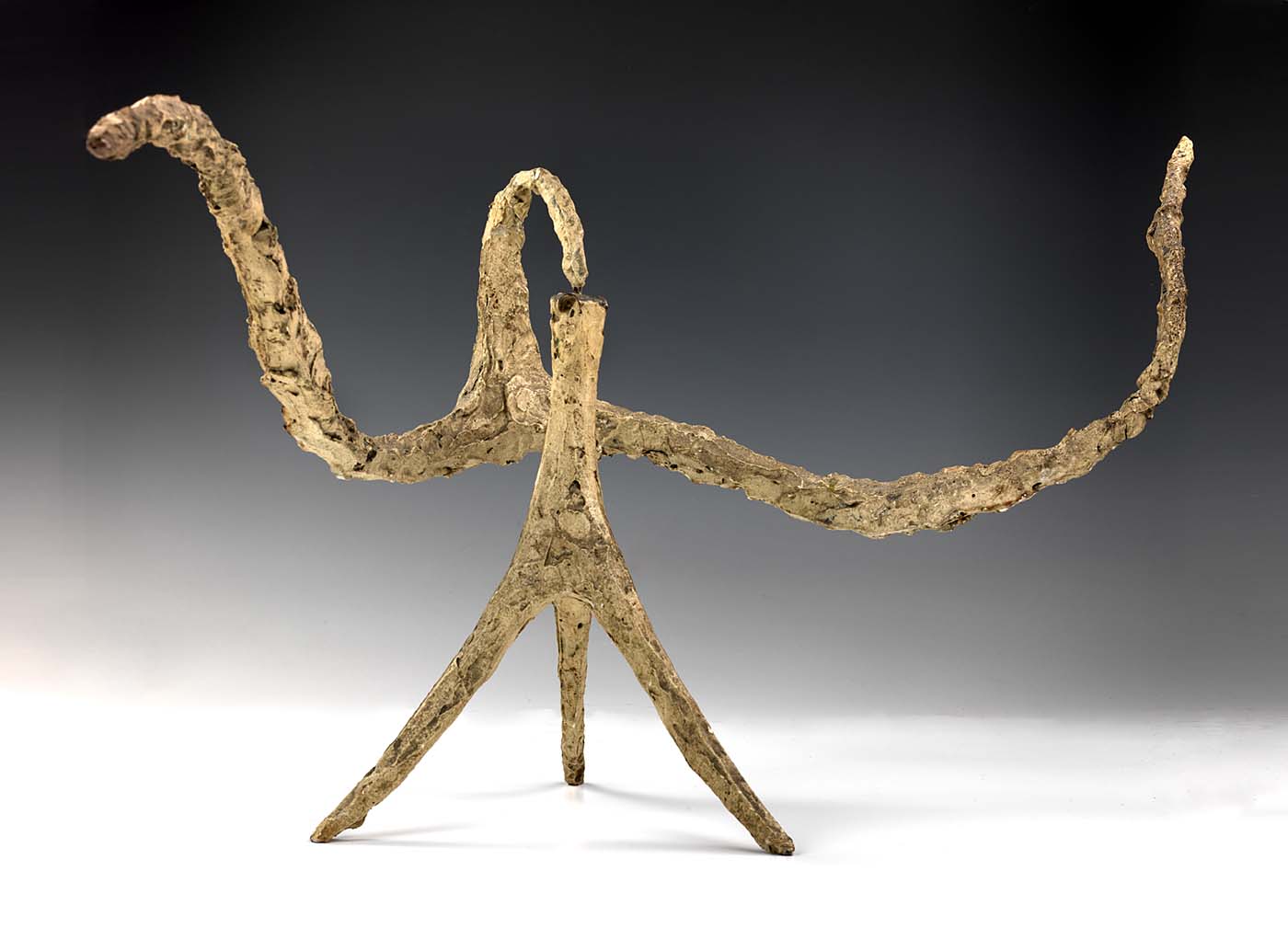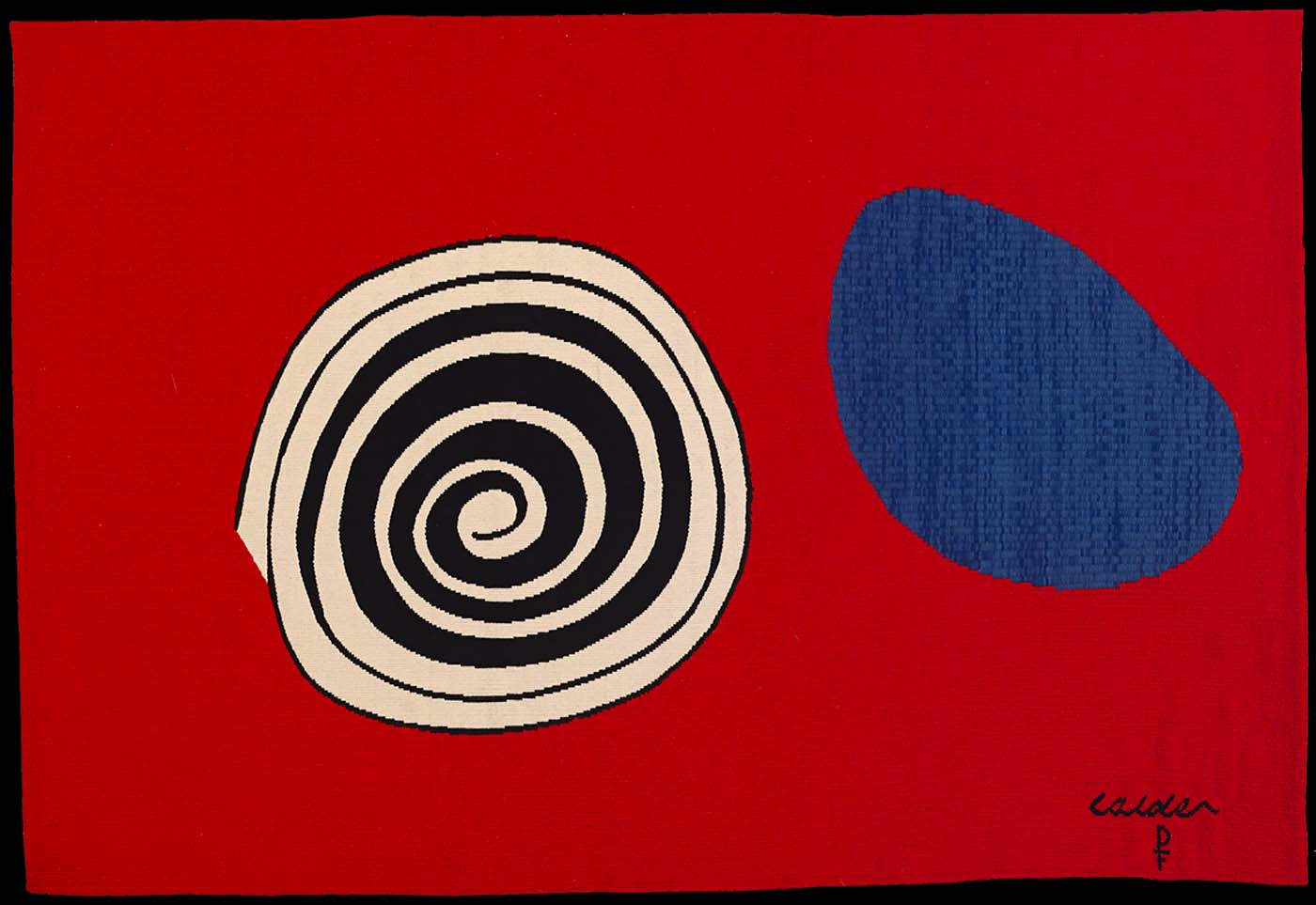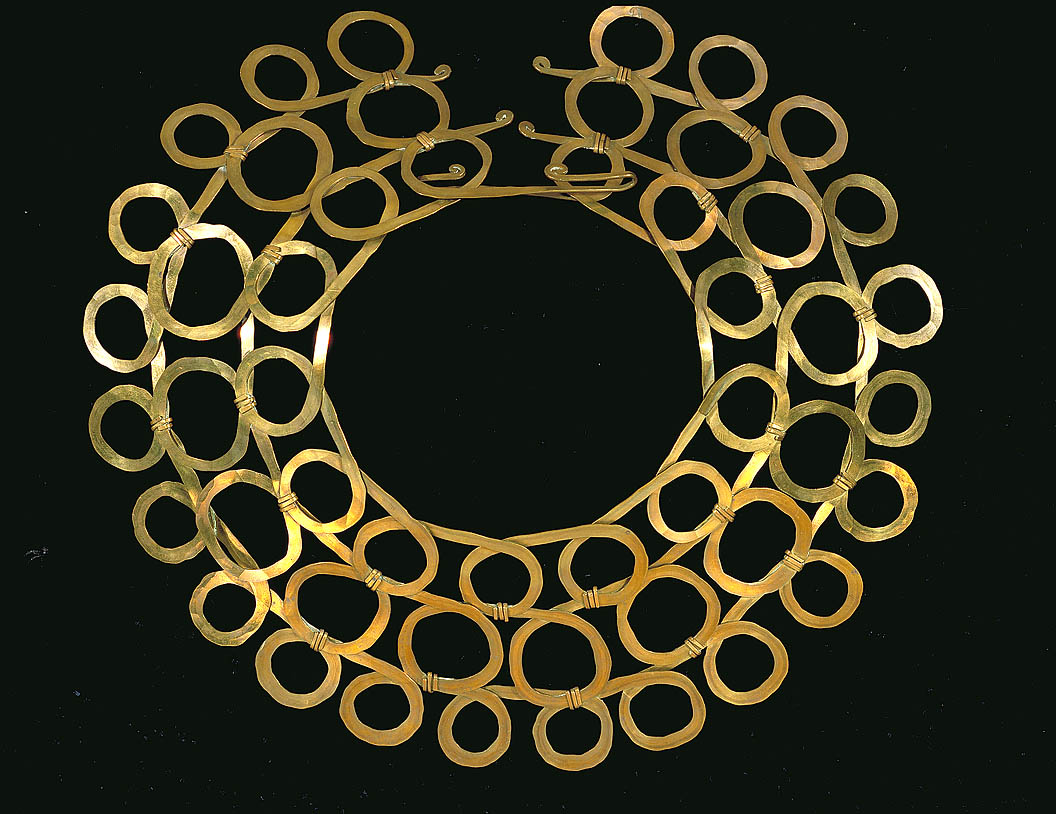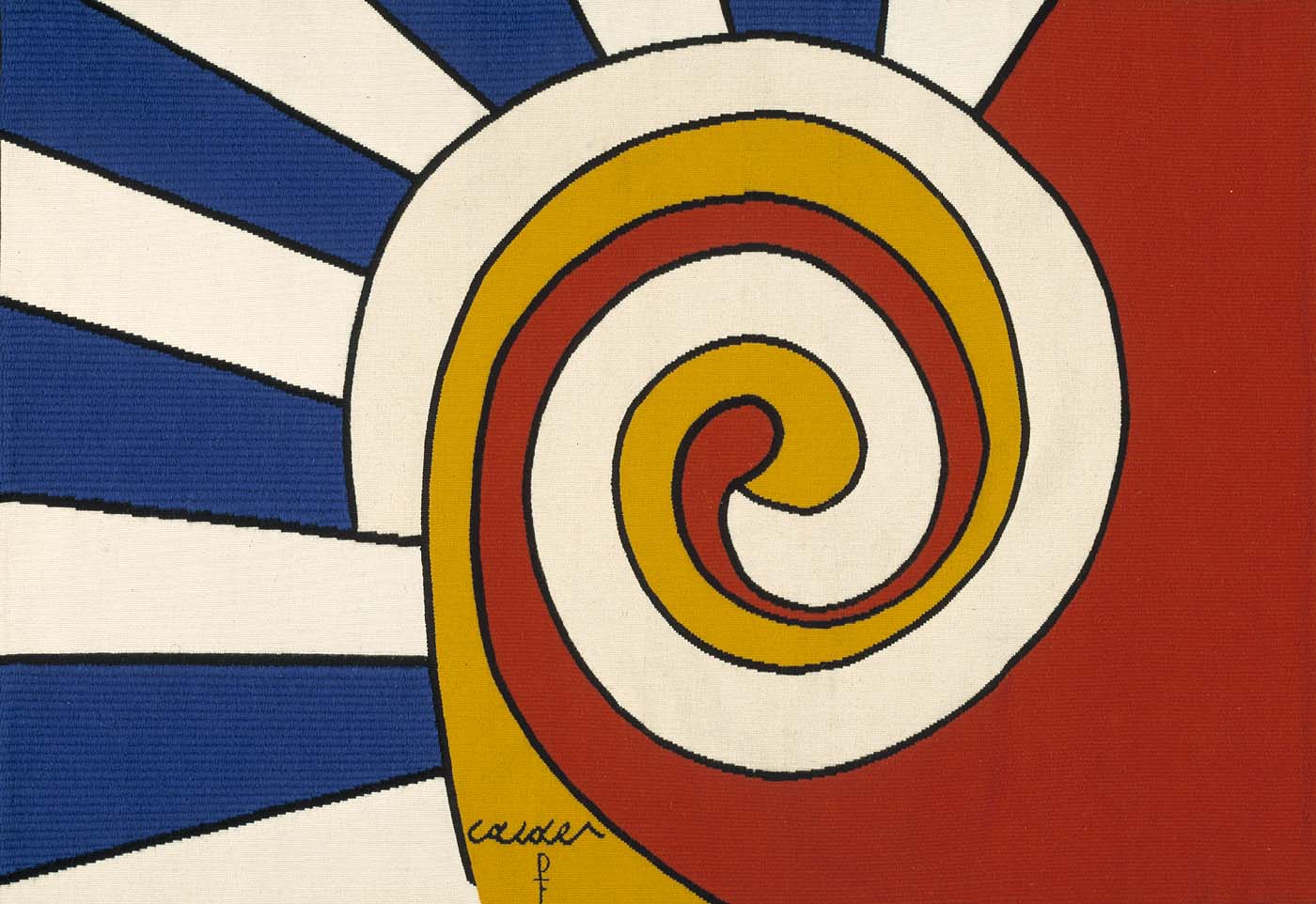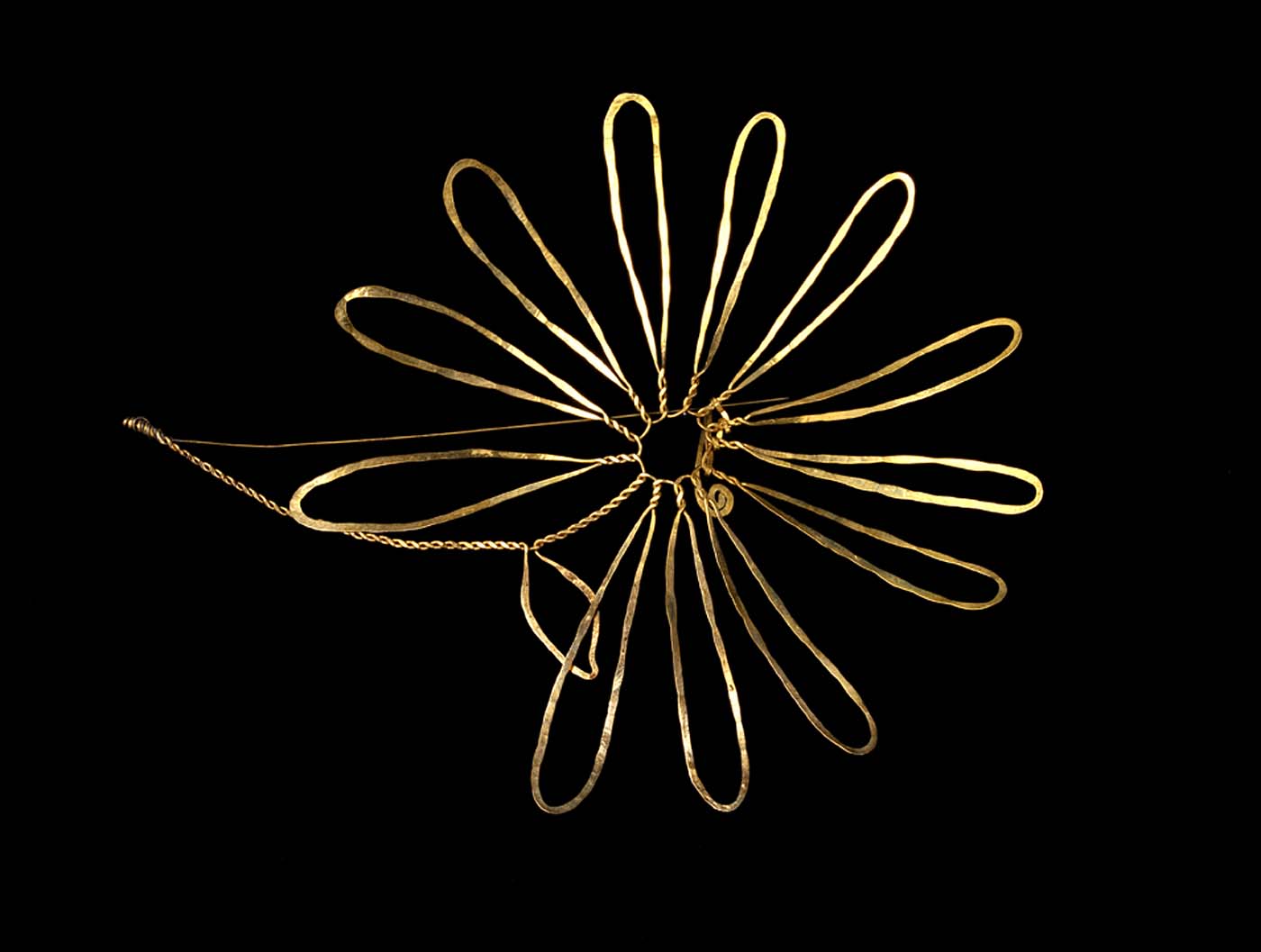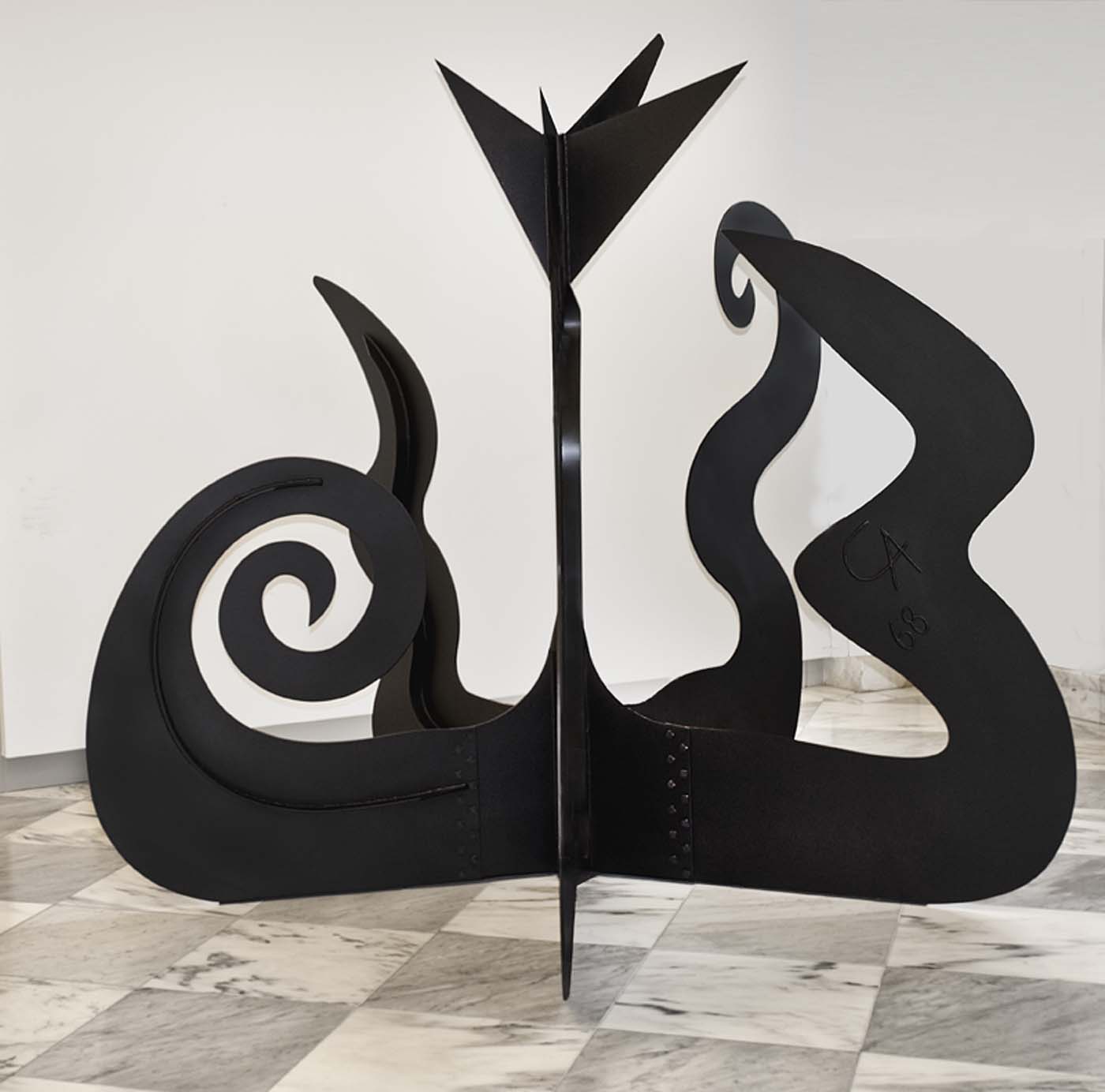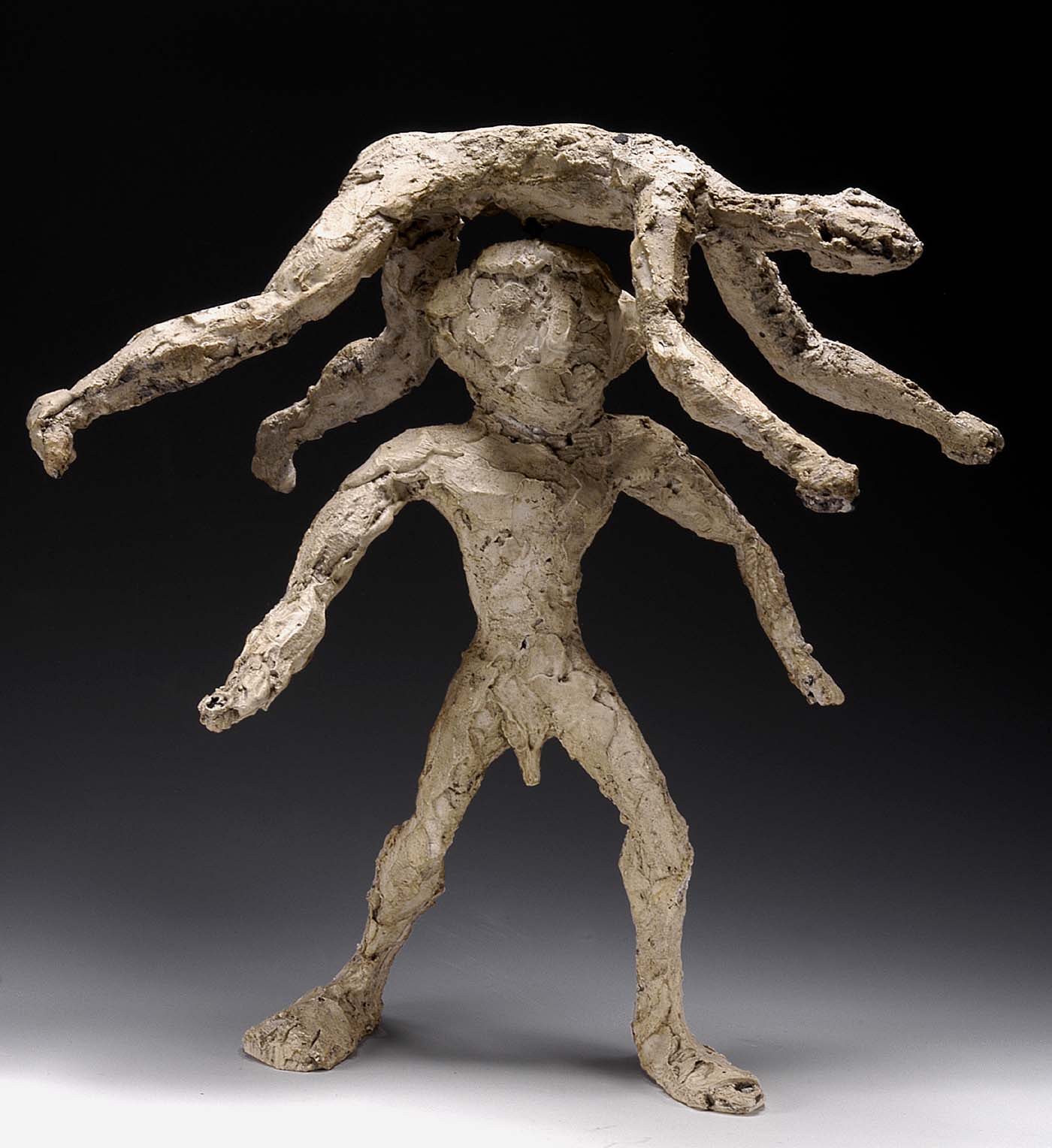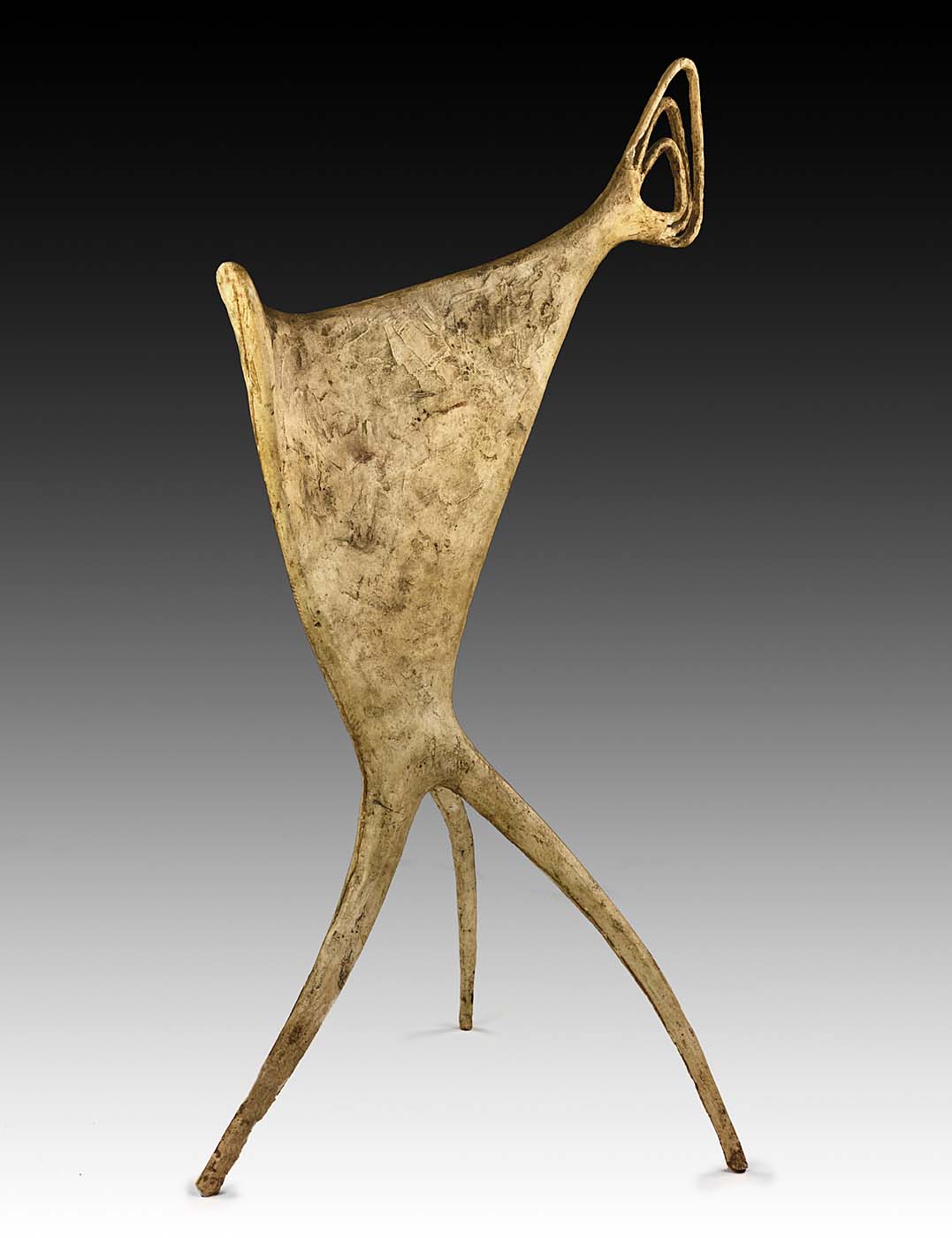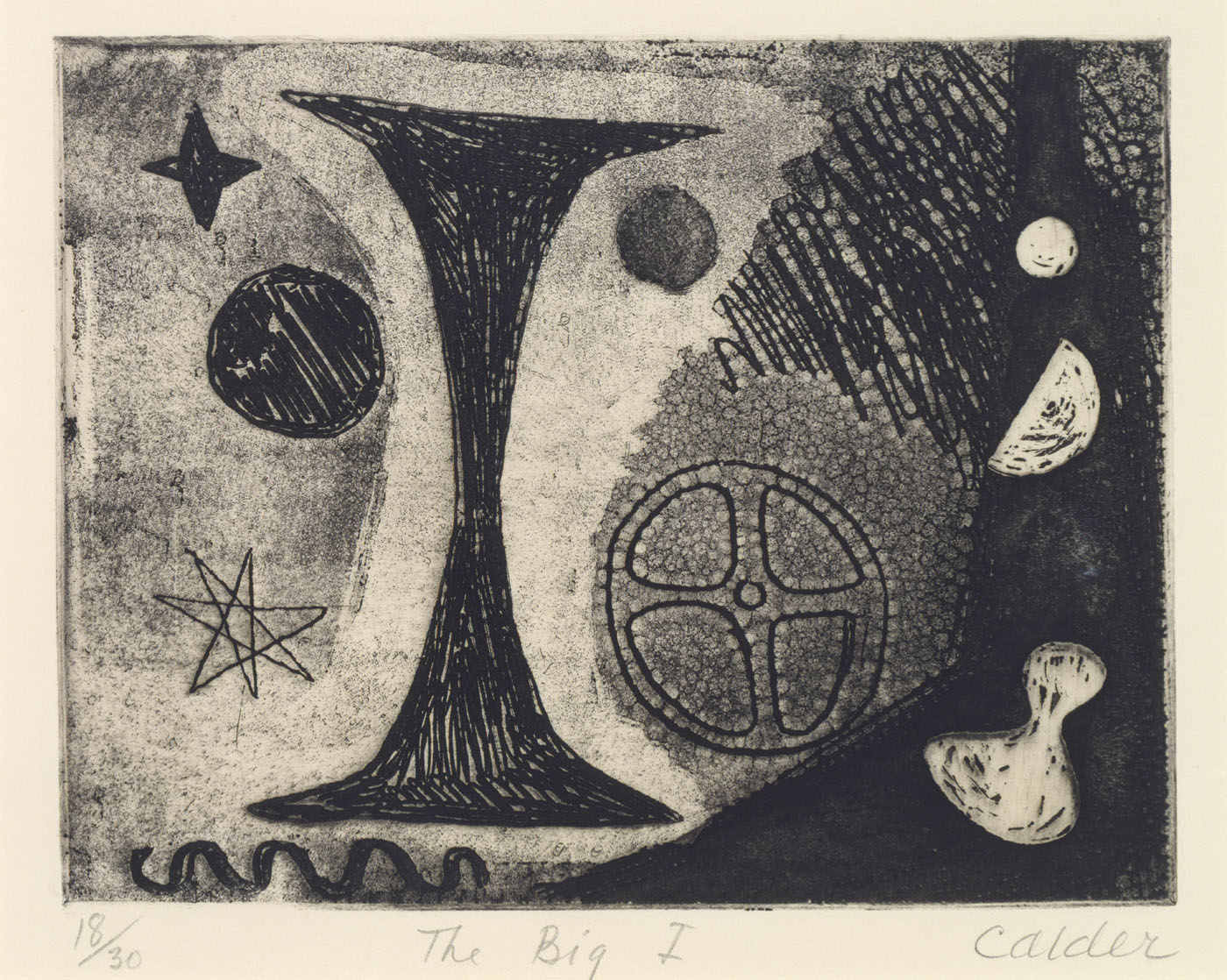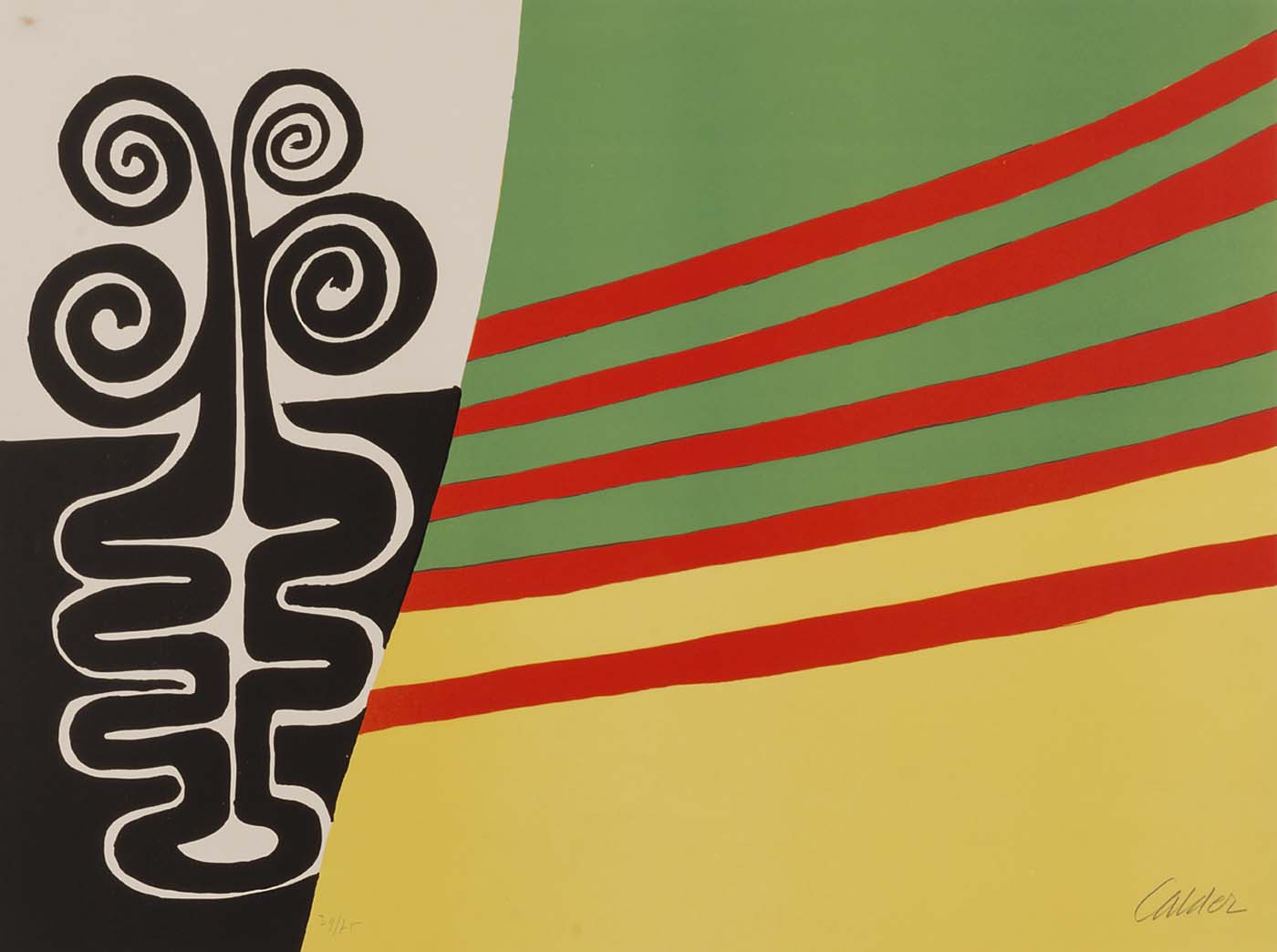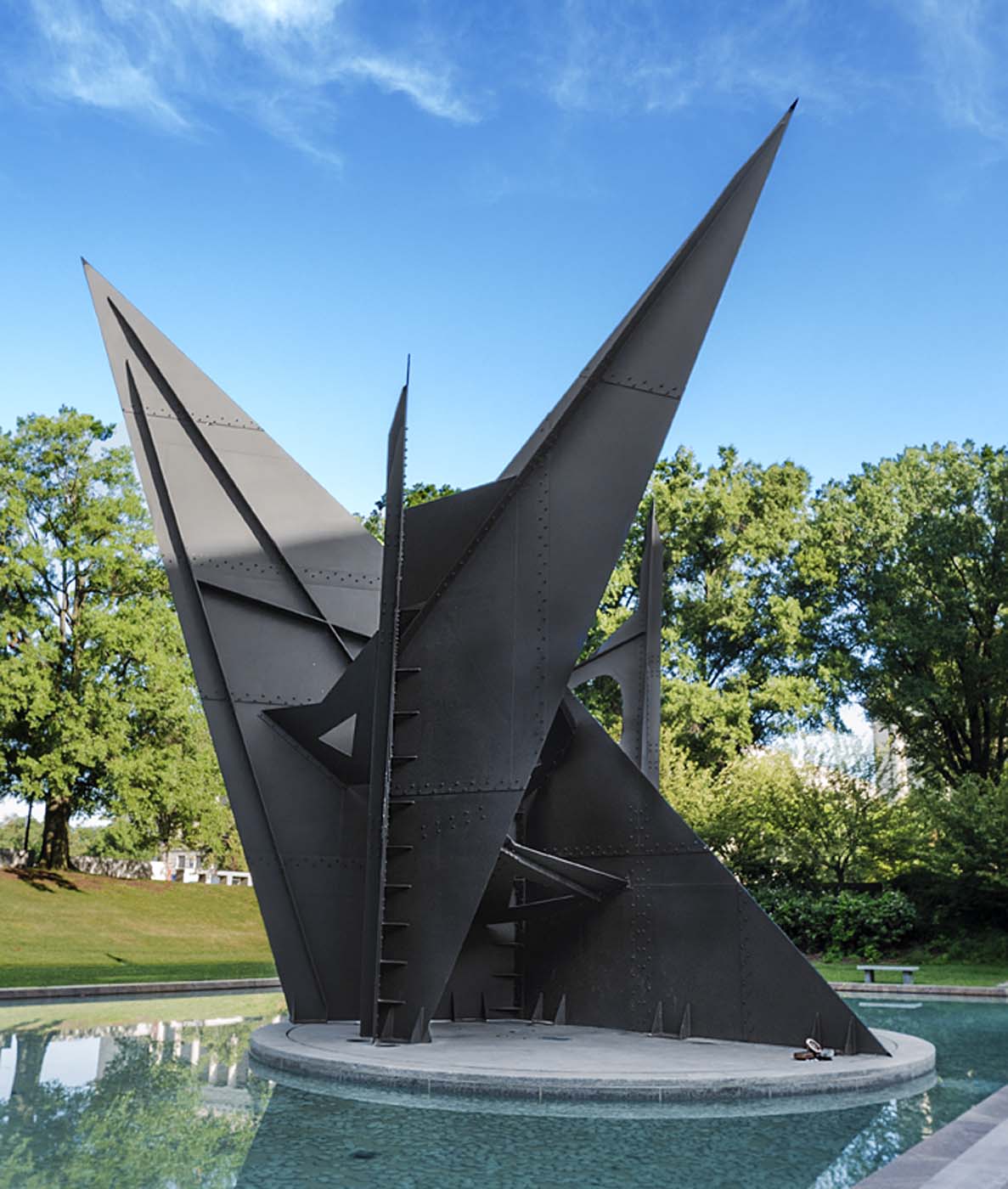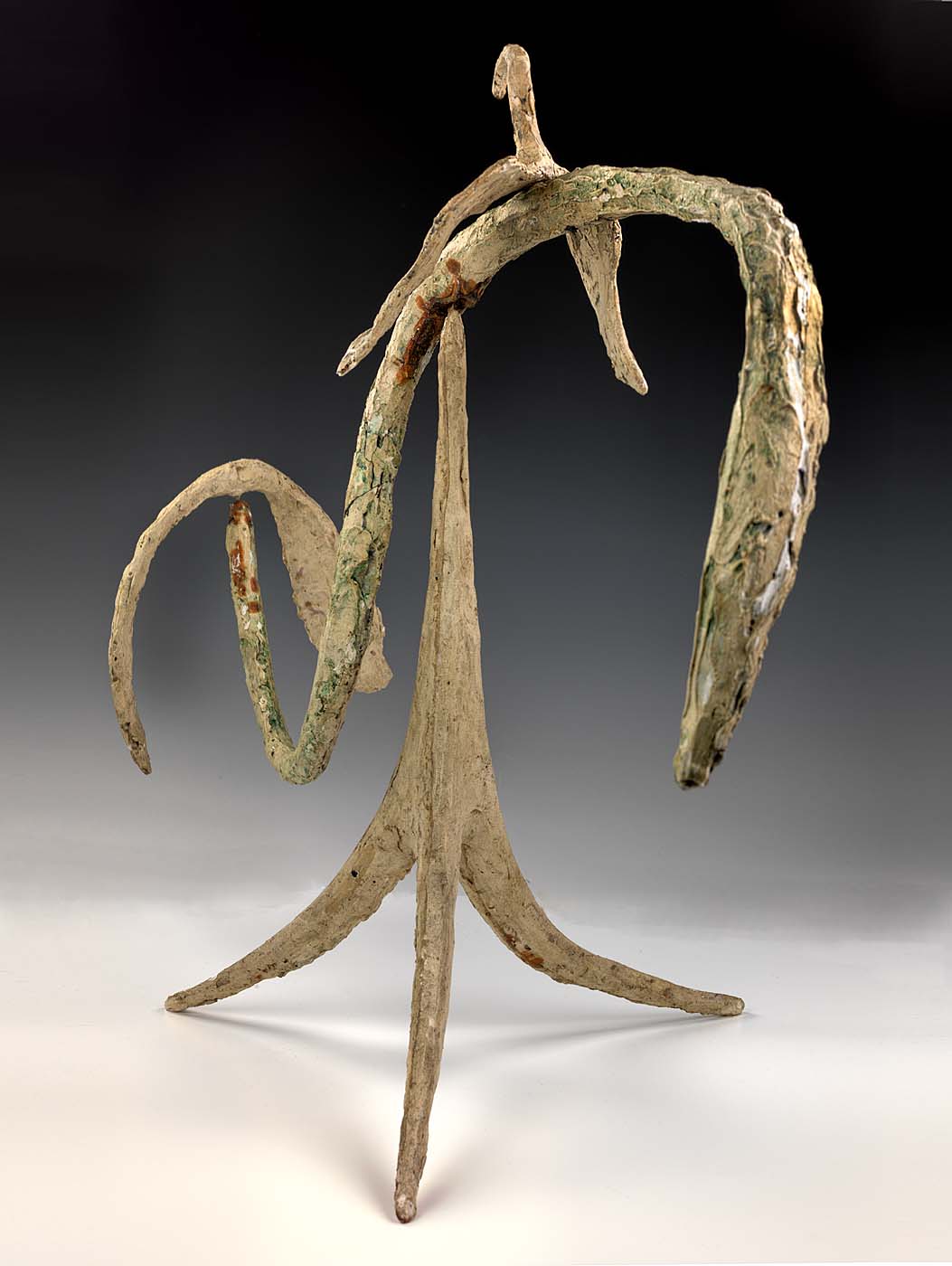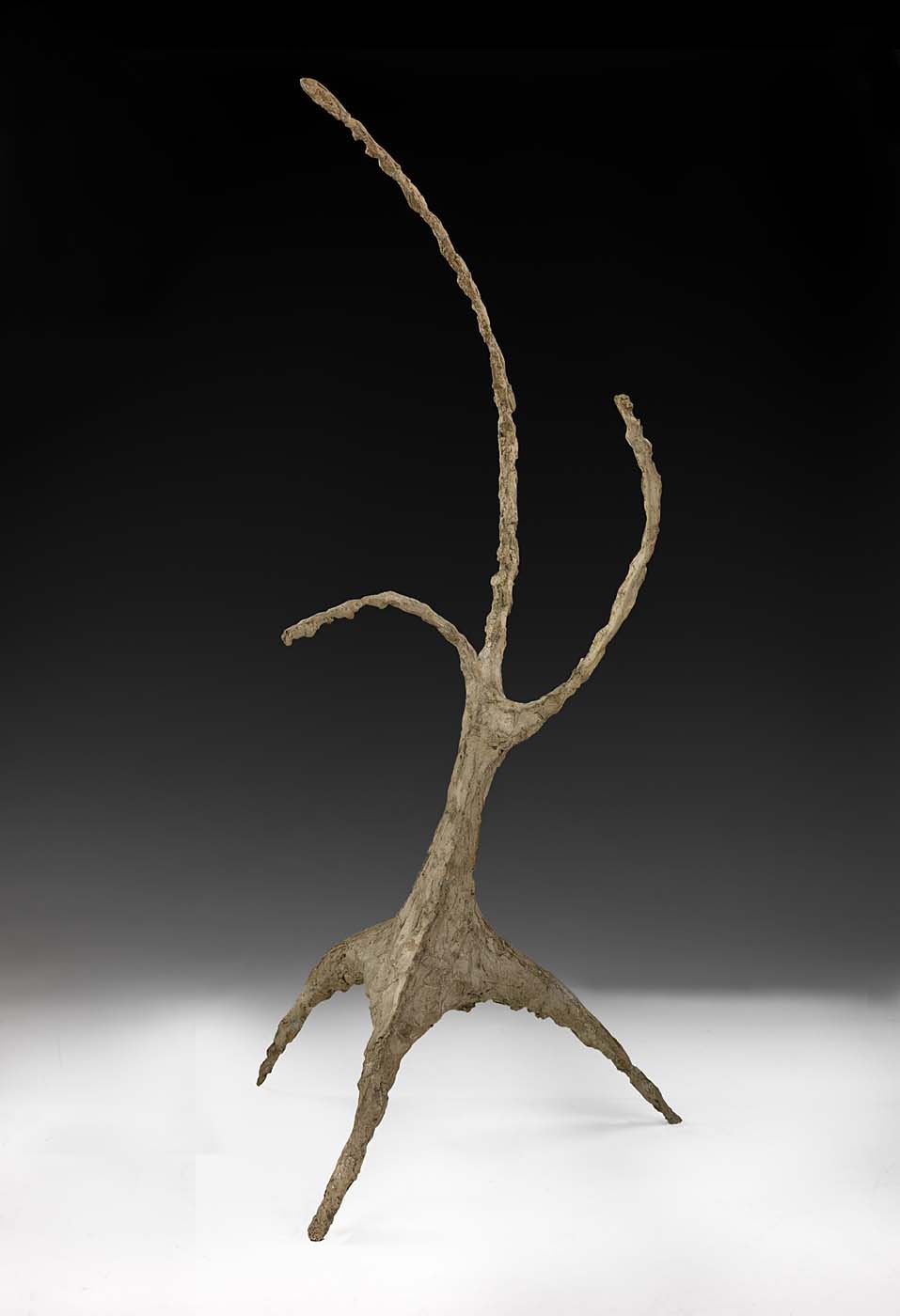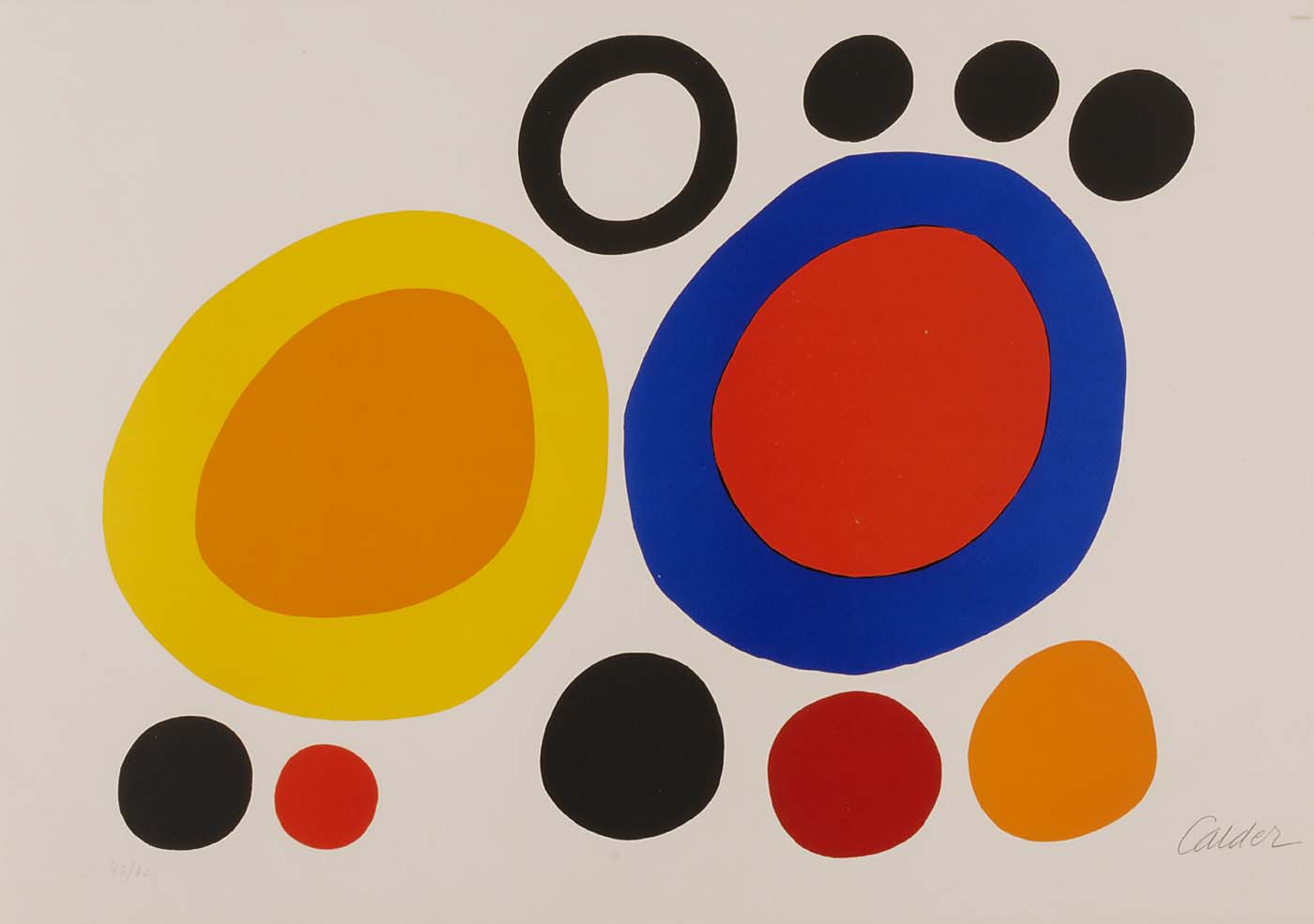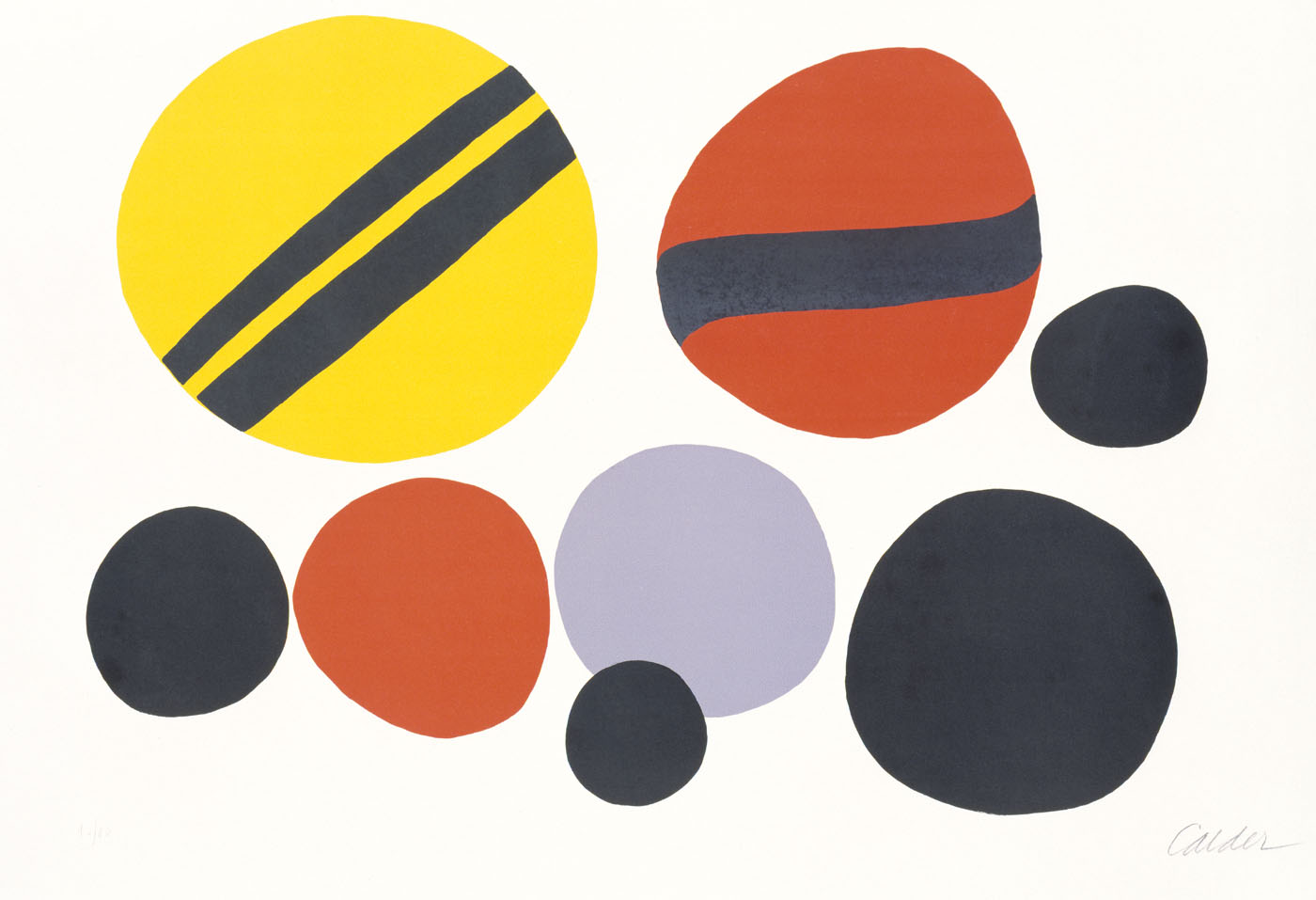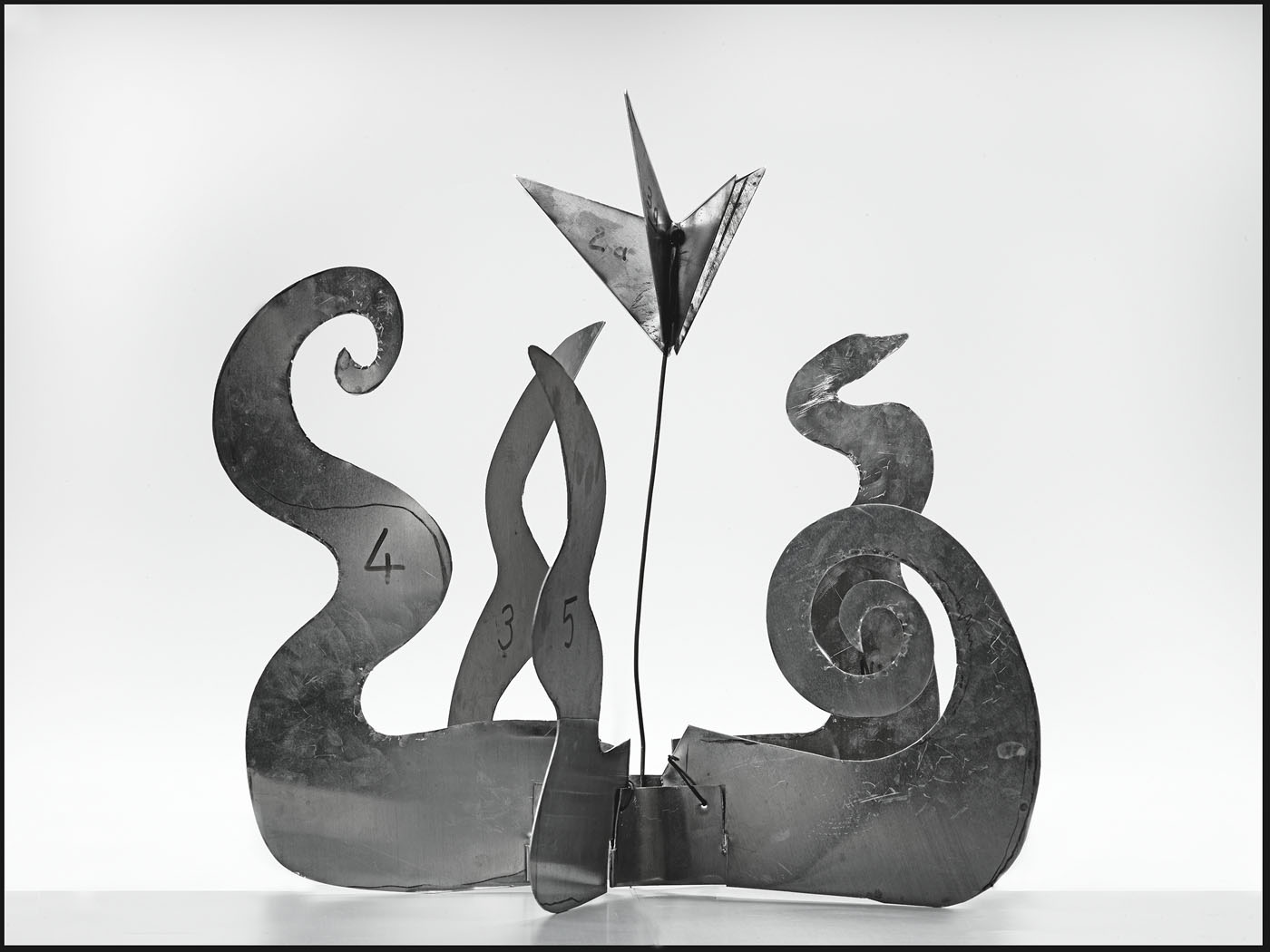Alexander Calder
Alexander Calder was born in Philadelphia in 1898, the son of the distinguished academic sculptor A. Stirling Calder. Trained as a mechanical engineer, he turned to art, attending the Art Students League in New York City. There he took classes with George Luks, Guy Pène du Bois, Boardman Robinson, and John Sloan and subsequently he established himself as an illustrator and caricaturist in New York.
While in Paris in 1926, he took up sculpture. After working on wood pieces, he began to make circus figures composed of twisted wire, wheels, string, and cloth. His miniature circus captured the attention of the avant-garde in Paris, where he met and was influenced by a number of artists.
Impressed by the work of Juan Miró, Jean Arp, and Fernand Léger, he created his first abstract stabiles in 1930. These works also owe much to the rectilinear designs of Piet Mondrian. From these early works and his interest in movement, Calder developed handcranked, motorized, and then wind-powered constructions that were dubbed "mobiles" by the French artist Marcel Duchamp. These sculptures, usually painted in bold basic colors, turn, bob, and rotate, in a constantly changing relationship to the space around them.
National Museum of American Art (CD-ROM) (New York and Washington D.C.: MacMillan Digital in cooperation with the National Museum of American Art, 1996
Selected Images of Alexander Calder
Objects at Dallas Museum of Art (1)
Objects at Crystal Bridges Museum of American Art (1)
Objects at Colby College Museum of Art (3)
Objects at Indianapolis Museum of Art at Newfields (4)
Objects at The Amon Carter (7)
Objects at Princeton University Art Museum (11)
Objects at Archives of American Art (25)









